#or that the two towers is bad because the fellowship is separated
Text
Corporate entities hate fanmade works and would love nothing more than to get them shut down entirely
They hate that there are people out there using their characters and their settings and having fun with them without having to pay them for the priviledge
But as long as fans aren't making money out of their IP they can currently get away with it. But we've recently seen a crackdown on people selling t-shirt designs, stickers, etc which violate this
So what can they do to try to firm up the laws on this, to get them to fall more in their favour?
Would writing their own fanfic and turning it into a show that they're making lots of money from be enough to do that, for them to sell merchandise and profit from someone else's IP without asking or paying for the use of it?
For it to maybe go to court for a very public fight over who can do what with a property they're a fan of?
Because that could well be what Disney is currently up to with their Star Wars shows
Not just making a few references to other movies or tv shows, but taking entire plotlines, blurring the edges of them, and dropping them right into their own shows
Want an example even if it risks containing show spoilers? of course you do!
Back in Season 7 of The Clone Wars (On the Wings of Keeradaks) we have a scene where Tech uses a recording of the flying lizards they encounted earlier to call them to their position and fly them out of danger
Just like Gandalf summons the eagles to come and rescue his party from the attack from Azog and his team of orcs and wargs, right down to the way some party members are left dangling over a huge drop off the mountainside
Later, in The Bad Batch (Reunion, S1), Hunter has been shot in the chest and Tech gets him up, gets him to safety, and (offscreen) medical aid is provided
Which is extremely close to that same rescue scene in The Hobbit: An Unexpected Journey, only the part of it where Gandalf gets Thorin up and out of danger, with the assistance of the eagles, after he's been severly mauled by a warg, and then rendering medical assistance to him
Tech goes on to have a big fall (Plan 99, Bad Batch, S2), right off the end of a great big crumbling bridge. Sound familiar to any LotR fans?
And in a different episode (The Crossing, Bad Batch, S2) Tech is seen falling and landing in a similarly super familiar looking cave
Which repeats parts of the two separate scenes of Gandalf falling and 'dying' ('The Fellowship of the Ring' for the fall, and 'The Two Towers' for the cave scene) which all the characters get really sad about - until he gets better and comes back. Which has yet to be seen in Tech's case.
(How Tech will be able to come back from his fall despite not being a wizard is explained via his character specific movie source they've made repeated use of, but since that's still hugely spoilery I'm not getting into that here)
And this is only a couple of examples of one tiny instance where this is happening, the show is filled with them and it applies to all the main characters not just Techdalf
'Entombed' (The Bad Batch, S2) hits The Hobbit up HARD for it's plot and not only gives us the Arkenstone but oblong, which it directly names as The Heart of the Mountain, which is found and then lost again, but dredges up a fire breathing dragon equivalent. Add in some additional Alien themeing and a lizardy creature that can be shot in the chest with a laser arrow before being tossed out of a window in full on 'OMG it's Ripley with the airlock' style and they're really cramming it in there. They end with a reference to an opportunity to find a golden chalice, which is what Bilbo took from Samug's hoarde as proof that he'd found it
But people have been easily sidelined from thinking about any of this too hard by them throwing in a handful of surface references to Indiana Jones, the potential of a love interest being developed, and the 'dragon' being a creature previously seen in the Jedi: Fallen Order video game
And don't even get me started on how Senator Avi Singh appears to live in Dale (Common Ground, Bad Batch, S1), Roland and Isa Durand apparently live in Rohan (Paths Unknown, Bad Batch, S3) or Dr Hemlock and his former base at Dol Guldur (Paths Unknown, The Bad Batch, S3) and what that implies for the remainder of the show
They've blended together a lot of canon prequel & clone wars era Star Wars content with a range of supplementary non-canon SW content such a comic books, video games, Legends novels, etc which maintains the idea that this show is nothing more than Star Wars and keeps a lot of long term fans happy and distracted by seeing non-canon things finally appearing in a canon setting, even if they have changed some of the details
But so many concepts and images have been lifted barely altered from their original sources, not just from Tolkein's works, and just slapped down like we're not supposed to notice how much of it there actually is because they've made the animation and lighting so very very pretty
#the bad batch#the hobbit#star wars#lord of the rings#the clone wars#lotr#fandom#they're specifically taking scenes from the movie versions of these stories#which just makes it easier for them I suppose#already having a nice convenient visual to copy
20 notes
·
View notes
Note
If it’s not a trade-secret, how does Legolas stay so chipper/optimistic despite all the loss?
How and why is Legolas constantly cheerful?
Legolas's age at the time of his mother's death varies depending on the adaptation or each individual writer's interpretation. In The Hobbit trilogy, it seems to be suggested that he was a child, perhaps even a newborn, when his mother died, so he never really knew her. I've seen a lot of fanfic authors and artists subscribe to this version.
In SotWK however, the Elvenqueen dies in Third Age 2793, when Legolas was already over 2,000 years old. (I outlined a detailed HC of that story HERE.) By the time Thranduil's family began to suffer losses, including being forced out of their home and into the cavern dwellings in northeastern Mirkwood, Legolas had already enjoyed centuries of a happy life during the Golden Age of King Thranduil and Queen Maereth (Third Age 100 to 1000). Legolas had the maturity and wisdom to process and overcome the tragedies that befell his loved ones, so that it didn't crush his bright spirit.

There is a reason why his family's motto is "We will endure." Thranduil and his sons are ALL strong of body, mind, and soul.
Here are some key aspects of Greenleaf's background that contribute to his effervescent personality:
As the baby of his family, Legolas is already by nature the most cheerful, energetic, and relentlessly positive of Thranduil's sons.
He grew up in an almost impossibly happy and loving home, with two nurturing parents and four older brothers who were his mentors and best friends. (My multichapter fic, "Greenleaf's Day Out", paints that happy family picture.)
Legolas is amiable towards everyone he meets, and is known for going out of his way to befriend not only his father's subjects, but also the outsiders who reside at the edges of Greenwood and people of other races he encounters in his travels. He is the Elven poster boy for non-discrimination; he just went through a bit of a rough patch late in the Third Age.
What about his animosity towards dwarves, e.g. Thorin and company, and initially Gimli? I could write a separate essay about that, but in short let's put it this way: given his family's tumultuous history with the Dwarven race, Legolas deserves a TON of credit for ultimately embracing Gimli as his eternal best friend.
Thranduil sent him to the Council of Elrond not because he was the only option left to be Mirkwood's representative, but because Legolas was in fact the Elvenking's Herald, a high-ranking position he had already held for centuries at that point.
Now, it is fair to say that having such a perfect family should only make it more painful for Legolas when bad things started to happen to them. His mother was murdered and one by one his brothers were taken away either by death or some other cause, leaving him with a heartbroken, increasingly cold father he could barely recognize.
By the events of The Hobbit, Legolas had already fallen to the lowest point of his life. The movies actually portray his angst and bitter relationship with Thranduil in a logical and realistic manner.
At the end of BotFA (movie), Thranduil finally accepts that the only way for his last son to find joy again would be to send him out of Mirkwood and into the world. By suggesting Legolas seek out and join "Strider", Thranduil releases him from his obligations as Prince so that he can forge his own path.
Joining the Fellowship heals Legolas's pain and rekindles his joyous, childlike nature, because in them he found a new family to be part of. Aragorn reminds him of his wise and compassionate older brothers, and in Gimli he finds a new best friend and partner-in-crime, much like his brother Gelir (to whom he was closest in age and spirit). Even the Hobbits likely remind him of the days when the Woodland Realm thrived as a home to many elf-children.
Still, it is not a perfect joy, as is shown in the Two Towers movie, where he slips into despair as he and Aragorn argue at Helm's Deep about "three hundred against ten thousand". He cannot be faulted for this, given how much death he has witnessed; but Aragorn knows his friend's tragic history and therefore assures him, "there is nothing to forgive".
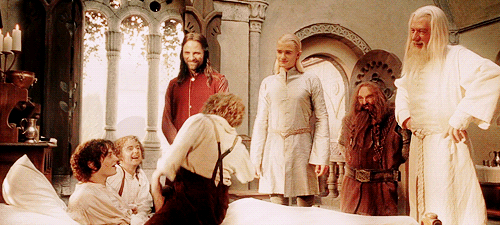
Ultimately however, Legolas behaves like a bright and carefree elf throughout the Quest of the Ring not only because it is his nature to be optimistic, but because his companions in the Fellowship were themselves a source of joy for him, a breath of fresh air after centuries of suffocating losses. He was literally "just happy to be here".
As always, thank you for your ask, mellyn nin @creativity-of-death! <3
#legolas#legolas greenleaf#legolas headcanon#lotr elves#lotr headcanon#thranduil#lord of the rings#sotwk answers
113 notes
·
View notes
Text
The Lord of the Rings Almost Killed Off One of the Hobbits
https://ift.tt/2THdh6D
The Lord of the Rings Trilogy’s $2.9 billion collective worldwide gross and 17 Academy Award wins (one of which was for Best Picture,) certainly make a case for the 2001-2003 films being the product of a winning formula, both production-wise and plot-wise. However, the process of getting the grandiose, once-unfathomable project off the ground naturally involved producers pressuring director Peter Jackson to implement ideas often contradictory to the source material. Apparently, one such idea would have seen one of the film’s four hobbits die!
While the more loquacious half of Lord of the Rings’ onscreen hobbits, Dominic Monaghan and Billy Boyd—Meriadoc “Merry” Brandybuck and Peregrin “Pippin” Took, respectively—have told myriad stories about life on the set across the past few decades through interviews and the films’ insightfully entertaining DVD commentary, the duo brought new anecdotes in an interview with IGN promoting their recently launched, Rings-heavy podcast, The Friendship Onion. According to them, there was a brief period in production during which Jackson was being “pressured from above” (presumably New Line Cinema,) to sacrifice at least one of the film’s four hobbits—of course, with the other two being Elijah Wood’s Frodo Baggins and Sean Astin’s Samwise Gamgee—for a development that would clearly contradict the text of J.R.R. Tolkien’s novels.
While the identity of the specific hobbit producers wished to see relegated to taking second breakfast in the great beyond was not revealed, Monaghan offers a theory, stating, “It’s a good job that didn’t happen, because it would have been me,” he laughed. “It definitely would have. There’s no way they are killing Frodo and Sam, and the only ones that would be left would be Merry and Pippin. They wouldn’t kill Pippin because Pippin has a really strong story with Gandalf. It would have definitely been me. I think Pete quite rightly was like, ‘This is a luminary piece of written work, and we need to stick close to the text.’ So, he stuck by his guns. Yeah, I’m thankful that didn’t happen.”
Read more
TV
Amazon’s The Lord of the Rings Series is Focusing its Massive Budget on Huge World-Building
By Joseph Baxter
Games
Dark Alliance Reminds Us We Need a Lord of the Rings: The Two Towers Remaster
By Matthew Byrd
Much to the gratitude of Monaghan and Tolkien purists everywhere, Jackson won that particular battle in the end, thereby leaving the trilogy as a more authentic take on the text. However, while the notion of actually making a casualty of one of the beloved hobbits might seem outrageous to moviegoers, especially those with intimate knowledge of the Middle Earth mythos, it was actually a sound suggestion from a purely dramatic standpoint. After all, as with Bilbo Baggins in preceding story The Hobbit, the diminutive hole-dwellers from the Shire were meant to represent average people, unprepared for the travails of life away from home, who, during times of war, find bravery within themselves when thrust into overwhelming circumstances. Pertinently, with strong bonds having been forged amongst comrades during said circumstances, the loss of one yields a dramatic payoff that’s hard to resist from a narrative perspective. Notwithstanding The Fellowship of the Rings‘ fateful death of Boromir, such a death wouldn’t even be without precedence, since, in adhering to the literary lore, 2014’s The Hobbit: The Battle of the Five Armies famously featured the deaths of the party’s two youngest, most energetic dwarves, Kili and Fili, in the climactic moments of Jackson’s prequel trilogy.
If, as Monaghan theorizes, Merry was set to be sacrificed in the name of plot pathos, then it likely would have occurred during Return of the King’s Battle of the Pelennor Fields, during which Merry—after being forbade by King Théoden—secretly joined a disguised Éowyn to participate in the Kingdom of Rohan’s horseback counter-attack against the siege forces of Mordor orcs—and later the oliphaunt-riding humans of the Haradrim—outside of Gondor. Merry’s role in the battle was the clear culmination of an arc that saw him go from a crop-thieving ne’er-do-well to sword-wielding battlefield hero, and highlighted him at his highest point. He also proved integral to the victory when he stabbed the Witch King of Angmar in the back—injuring himself in the process—which allowed Éowyn to make the iconic “I am no man” deathblow to the head, taking the enemy’s most powerful player off the board. Yet, Merry was left in bad shape by the end of the battle, found barely cognizant by a wandering Pippin in the aftermath, facilitating one of the film’s many emotional reunions. This moment could have been repurposed into Merry’s death scene, after which a perturbed Pippin would be motivated for vengeance in the ensuing, trilogy-climactic Battle at the Black Gate, thereby completing his own arc.
New Line Cinema
While Jackson had to make several changes from the source material—mostly regarding the timeframe and segments that detracted from the main plot—to make The Lord of the Rings’s chronicle-styled prose work on the big screen, he also knew that the understated narrative in the periphery from Tolkien’s extensive lore was an intangible quality that separated this mythos from other fantasy offerings. Indeed, the appendices included at the end of the novel trilogy were a consistent source of context-setting backstories that Jackson wove into the main narrative of the movies. Case in point, in the novels, the movie-prominent romance of Aragorn and Arwen was primarily told in the appendices, outside the main content. Likewise, Tolkien crafted full fates for our foursome of hobbits, including Merry, who ended up marrying Estella Bolger and becoming a key member of the Shire’s leadership as the Master of Buckland. The backstory is so extensive that it also reveals when Merry and Pippin died, after which they were entombed with honor over in Gondor, later joined by King Aragorn Elessar himself. Consequently, it would have seemed disrespectful to dismiss such extensive stories by Tolkien.
cnx.cmd.push(function() { cnx({ playerId: "106e33c0-3911-473c-b599-b1426db57530", }).render("0270c398a82f44f49c23c16122516796"); });
Regardless, fans of The Lord of the Rings will soon have no shortage of new onscreen content, with Amazon’s untitled prequel series—set thousands of years before the main story—currently in production and possibly set to premiere either by the end of 2021 or sometime into 2022. Moreover, an anime feature focused on the namesake of famous fortress Helm’s Deep, titled The Lord of the Rings: The War of the Rohirrim, is also in development from Warner Bros. and New Line. Given the eras in which these offerings take place, fans can likely breathe a sigh of relief for poor Merry.
The post The Lord of the Rings Almost Killed Off One of the Hobbits appeared first on Den of Geek.
from Den of Geek https://ift.tt/3l810TY
4 notes
·
View notes
Text
One of the exercises in Julia Cameron’s The Vein of Gold is to compile a list of favorite movies--or ones with images that resonate with you--and note any patterns that arise. Here are some of mine, with observations below.
(For the purposes of this exercise, I’m sticking with live-action films, but there’s no reason why there couldn’t be animated films.)
1. Star Wars Original Trilogy (Star Wars, The Empire Strikes Back, Return of the Jedi)
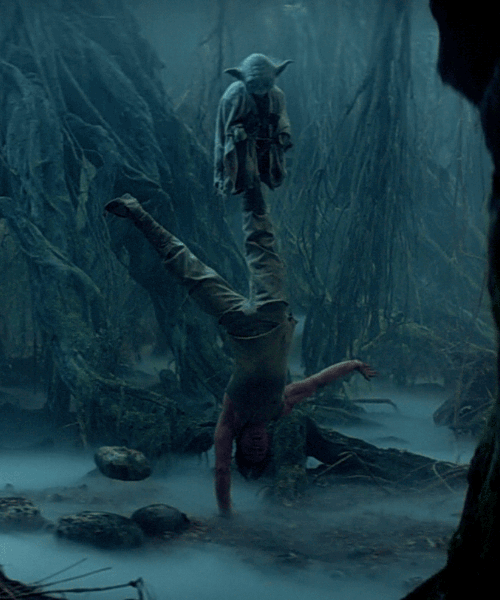
(Yes, I know this is technically three films, with three different directors and independent histories, but I didn’t feel like listing them all separately.)
2. The Lord of the Rings: The Fellowship of the Ring
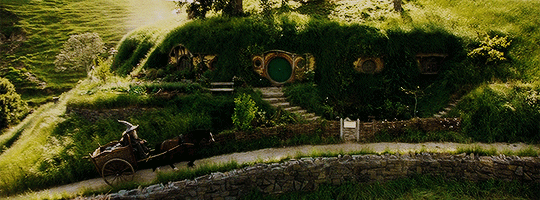
Ironically, I love the first Peter Jackson movie, but not any of the subsequent ones. Which is not to say they’re necessarily bad movies, but they’re not the ones I’d want on endless loop. (Part of this is because The Two Towers and The Return of the King are essentially war movies, and also because I have to watch Faramir act OOC, which hurts my soul.)
3. The Secret Garden
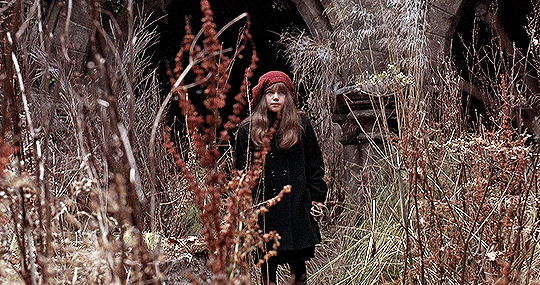
4. The Matrix
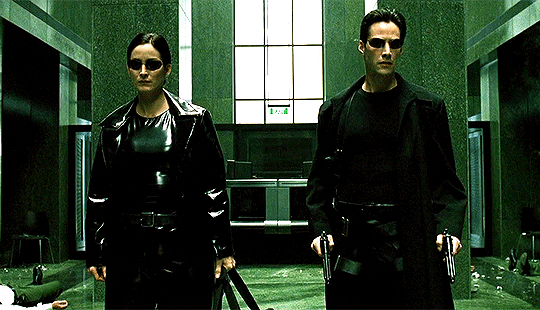
I actually don’t have strong feelings about Reloaded and Revolutions--like, the actual plot is weird, but I am so not watching these films for plot.
5. Return to Oz
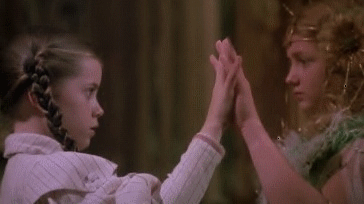
6. Inception

7. Labyrinth
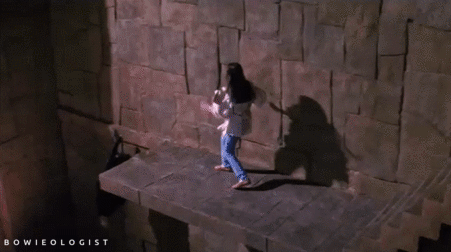
8. The Terminator
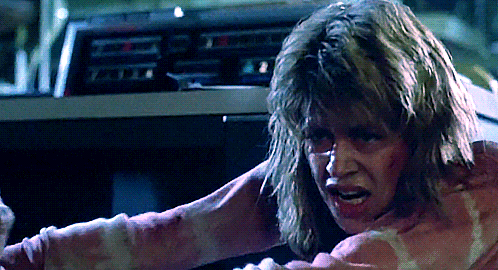
Don’t get me wrong, Terminator 2 has a lot going for it, but it’s not the one that I can’t stop thinking about (except for that one deleted scene with Michael Biehn, which is a totally different story).
Thoughts and Themes:
So at first glance, it seems like I have two separate categories: ‘80s and ‘90s-’00s films. Or maybe it’s sci-fi and fantasy? The Secret Garden is the only one that even approaches some kind of realism, and even that is a pastoral kind of world that would not be out of place in the more peaceful parts of, say, Middle-Earth (especially Fourth Age). How about high-tech vs. low-tech, or cyberpunk vs. fairy tale? Or, even better, what about reality vs. illusion (or story vs. truth if you prefer)--which is also a major tension within every film on this list?
I’ll also note that most of these films have an epic color palette, with memorable landscapes that either serve as characters in and of themselves, or symbolize the mental states of various characters. These films are beautiful works of art, reveling in The Aesthetic, whether that’s the idyllic peacefulness of the Shire or the grimy back alleys of 1980s Los Angeles.
The thing that really got me when I laid it out like this--the thing I hadn’t noticed before--was that all of these involve a (sometimes literal) rebirth, transition, or journey from darkness to light (or light to darkness to light again, depending on the work). You could also substitute life and death here, and not change much.
This is, again, often quite literal: Sarah moves underground in Labyrinth, the Fellowship descends into the Mines of Moria, the secret garden comes to life with the spring, Dorothy confronts the Nome King in his underground lair. Neo wakes up to find himself naked and soaked to the skin, and flushed down the tubes like garbage, in a literal hellscape where the machines destroyed the sun (a motif that also appears in Terminator’s dystopian future), then literally dies and is resurrected at the end of the film. Luke goes underground to confront his own double--another recurring theme!--on Dagobah.
Duality and the exploration of one’s soul through another world is HUGE big theme--or, to put it another way, The internal mirrors the external. This is a huge motif of Inception, which is a literal inward journey into a character’s psyche; and you could also make the argument that both Return to Oz and Labyrinth cover similar territory. Is Oz real, or is it in Dorothy’s head? Is Ozma a part of her, or is Ozma a separate entity? Is Jareth a real foe or is he the embodiment of Sarah’s fears and desires, a fantasy she concocts based on a story in a book? And Frodo realizes he’s not so different from Gollum, that the sad shriveled creature is what he could become if he fails at his task--and, ironically, his kindness to Gollum is what allows the quest to succeed when Frodo finally succumbs to temptation.
Frodo in the The Fellowship of the Ring sees the world differently when he wears the One Ring, and it’s terrifying. Sarah Connor realizes that she’s left her ordinary world behind and crossed into Kyle and the Terminator’s reality in a moving speech, and The Matrix doesn’t even try to be subtle. Even The Secret Garden uses the eponymous garden as a metaphor for the blossoming of Mary’s own soul, and the souls of those around her (especially her uncle and cousin, but also Ben Weatherstaff).
These stories are also concerned with ecology, though it’s usually a background motif, since the main focus is on saving the world (or what’s left of it, i.e, humans). The Shire is paradise; Mordor is a desolate hellscape, dominated by a giant volcano. Kyle Reese breaks down over the beauty of the world, and Mary Lennox seeks to bring the lost garden back to life. Dorothy retreats elsewhere after the grey grimness of Kansas/the mental hospital.
There’s also a real tension concerning humans’ relationship to technology in these films. The Matrix is an illusion, and machines control the earth. Or the machines don’t even bother farming humans and aim to kill ‘em all. Saruman literally transforms Isengard from a tree-lined field to an industrial hellscape. The mental institution uses that freaky electrical machine on Dorothy. Star Wars is more accepting of droids and technology, but even there, there’s tension: Obi-wan calls Darth Vader “more machine than man,” and it’s not a compliment; the Death Star is built to obliterate entire planets and must be stopped twice.
I’d argue this theme goes deeper than human/tech--it’s really human/other, with technology providing one kind of other. There’s human-alien interactions in Star Wars and Labyrinth, not to mention Mary’s relationship with the robin in The Secret Garden, Dorothy’s friendship with Jack Pumpkinhead and the Gump. On a less friendly note, Frodo’s relationship with Gollum is the emotional crux of the Lord of the Rings.
These films also feature the classic hero’s journey, but often through a female lens. The protagonist usually has no special skills other than their strong moral character and determination--or even if they do have skills (like Ariadne*), they still serve as an audience surrogate or substitute, a stranger to the new worlds they visit. The protagonist has at least one faithful friend/companion/love interest to help them (sometimes even a team/found family), and often a mentor as well (who may or may not be a crusty eccentric). In the end, the characters must take control of their own destiny--Frodo chooses to leave the Fellowship, Luke throws away his lightsaber rather than kill his father, Sarah declares to Jareth “You have no power over me”. Sarah Connor yells, “On your feet, soldier!” and keeps going to the bitter end, and Mary Lennox is unafraid of her bratty cousin’s wrath and puts a stop to it when everyone else enables him.
*(As an aside, I know Ariadne’s not the main character in Inception, but I find the actual main character way less interesting, so she’s the one I focus on, just like I find Trinity far more compelling than Neo.)
Characters often have Meaningful Names: Morpheus, Trinity, Neo; Ariadne; Luke Skywalker, Han Solo. These films also feature a question of fate and inevitability - Luke has precognitive visions, Neo consults the Oracle, Sarah is told “there is no fate but what we make for ourselves,” with Kyle serving as an oracle of sorts with messages from the future to come. The Mirror of Galadriel shows possible futures for the Shire, too.
Another theme is that the protagonist must suffer and/or work hard for their transformation. Mary has to do the actual work of gardening; Luke has to sweat and do handstands (beautifully, I might add); Frodo has to walk to Mount Doom; Sarah has to walk the labyrinth, and Sarah Connor has to survive a fucking nightmare. Dorothy has to rescue the royal family of Ev and free Ozma; Ariadne has to design a dream-puzzle for the heist to work. Even Neo has to train with Morpheus--though he’s able to use cheat codes to download martial arts directly into his brain without having to sweat for it; his real journey is in self-confidence.
In keeping with the stunning visuals, impossible feats are regularly featured, and excellent, cutting-edge-for-their-time special effects are prominent. Many also feature stunning fight scenes--the classic Luke vs. Vader duel on Cloud City; the “I know Kung fu” sequence in The Matrix; the clashes in The Fellowship of the Ring. Jareth has some excellent moves in Labyrinth, too, although he’s more inclined to dance than traditional battles.
I couldn’t resist contrasting my favorite moment in Return to Oz--rescuing Ozma from the mirror prison--with Ariadne shattering her own reflection in Inception, because that is such a moment for me, encapsulating all of the reality/illusion, internal/external, self/other dichotomies I mentioned above. (See also the Mirror of Galadriel above.) Inception and Labyrinth also share the motif of impossible Escher staircases, which I freakin’ adore.
It will probably come as no surprise to note that I also enjoyed films like The Dark Crystal, The Neverending Story, and What Dreams May Come, which tap into similar themes and imagery. You’ll probably be able to guess that The Sword in the Stone is my favorite animated Disney film, too.
I also love a number of Asian films like Hero, House of Flying Daggers, and Crouching Tiger, Hidden Dragon, all of which feature beautiful landscapes and color palettes, stunning fight scenes and special effects, along with a healthy dose of the fantastic, and a focus on story vs. reality (often with a plot twist or surprise reveal at the end). This is unsurprising when you consider the strong debt both Star Wars and The Matrix owe to Asian cinema in terms of style, plot, and aesthetic. In those films, the tension is more society vs. self, but duality is still very strongly present.
If you notice any other patterns or recurring themes, let me know; I’d love to hear them! Also, if you can think of any other movies I might enjoy based on this, let me know.
4 notes
·
View notes
Text
Thoughts on Life is Strange 2
Okay. First, I should do a full disclosure on me and LiS. If you don’t care, you probably should skip the next couple of paragraphs where I get into LiS 2 itself. Also, I’ve only gotten partway into the game... but I still have fallen very much in love with the characters and the dynamic.
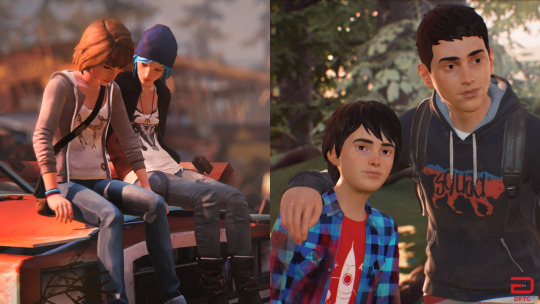
I love the first game. I am a huge Pricefield fangirl and also am an Amberprice fangirl even if I do think Rachel Amber had moved on from Chloe before her death. I mean, not all relationships last. I once had a rather intense and fun relationship with another girl that lasted all but a month... but was still full of ups and downs and while I might do a few things differently, I’d never chose not to have dated her. That’s how I see Rachel and Chloe - Rachel had a lot of fun with Chloe... but realized after a year or two that they wanted different things in life. That doesn’t lessen what Chloe and Rachel had together, though, or for that matter what Max and Chloe have.
My enjoyment of Life is Strange: Before the Storm is more... problematic. I had issues with their portrayal of Joyce and David, and feel that there could have been a far better portrayal of Chloe’s issues if they had shifted it to the fall of 2009 and had Chloe having to cope with her mother getting ready to marry David (especially as in-game, Joyce started seeing David within two months of William’s death). The story should have been about Rachel helping Chloe cope with her life going upside down, not Chloe trying unsuccessfully to be Rachel’s hero and solve her problems. We should have seen how Rachel was Chloe’s angel, not this idiocy that the plot became.
All things aside? Max and Chloe’s story is ended. Whether you tossed Chloe into the metaphorical volcano to save Arcadia Bay or chose to let things happen and accept you can’t save everyone, you can’t effectively create a sequel without undoing everything of the first game. Seriously, you need to use Time Travel to undo the entire week, possibly up to the start of September, and maybe even all the way to March when Rachel died. Why not just move on with all new characters and a new setting? And Sean and Daniel’s story is one worth seeing.
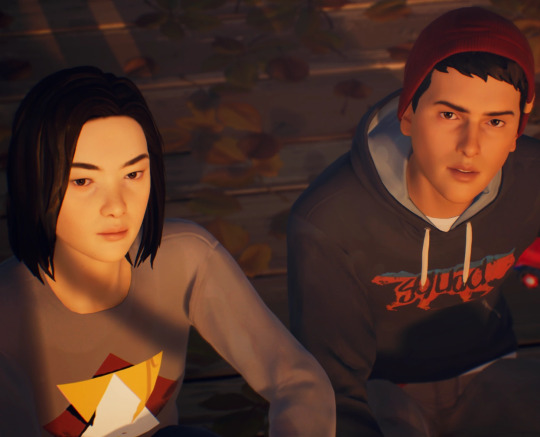
Now, I have to admit when I first heard things about LiS 2, I groused over the fact we had an 18-year-old guy as the protagonist. As a woman, I kind of prefer playing female characters. We don’t get a lot of them. Often when we do, the character is generic and either a round peg put in a square hole (Mass Effect) or the story is so bare-bones that it doesn’t matter what gender or race you are (Elder Scrolls). Even after having played what I have with LiS 2? I still feel that Sean could easily have been Shawna and it could have worked equally well - only it’s a Hispanic teenage girl protecting her younger brother even against snide white trailer trash who upgraded to a real house. And yes, we need more minority protagonists... but there are a lot of Hispanic girls out there who likely would have loved to be the heroine of a tale.
Despite my desire for more strong female protagonists... I love Sean. I love how he is protective of his kid brother. There is a true sibling bond there and their dynamic reminds me of my cousins, and maybe even how I was with my older brother when I was younger. (Being a young brat transcends gender. We girls can be as bratty as boys.) Further, I love the dynamic between him and Lyla, and I can understand why @lylapark is so in love with the character. Even though we only see her for the first part of LiS 2, between those interactions and the texts between the two after Sean’s world turns upside down... you sense these two are also family - but the family one chooses rather than being born with.
That is the thing about Life is Strange 2. It is a story about family. The original Life is Strange was a coming-of-age story of a young woman realizing she isn’t straight (I mean, you can have her literally come out of the closet to protect Chloe from David) and seeking to do everything in her power to keep her best friend safe. It was a story of young love, and of learning who you are. It was a story about realizing you are strong - and one interesting thing is that Max never truly loses agency... even when tied down with David Madsen rushing to stop Mark Jefferson, it takes Max’s direct action of distracting Mark Jefferson in order for David to succeed. But that’s not what Sean’s story is about.
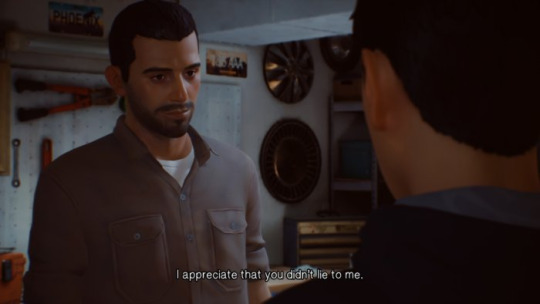
Sean is a teenage boy. He is just coming into adulthood. He has a loving relationship with his father, he loves his brother more than anything, and he realizes the world isn’t his friend. Bad things will happen and as a Hispanic teenage boy he has to be extra careful, as unfair as that is. What’s more, there is no free “rewind” to fix the story. He can’t afford to be reckless. But then, as I said already... Life is Strange 2 is a story about family. It is a story about a young man being tossed into the deep end and having to become an adult. It is about someone trying desperately to keep family safe.
So... if you loved Max and Chloe’s story... give Sean and Daniel’s story a shot. It is not the same type of story. It isn’t a love story, or a story of a young woman realizing she’s gay, or anything of the sort. Instead, it is a more personal story. Because family is important to most of us. And sometimes we don’t get along with our siblings or parents... but just as Lyla is as much family to Sean as Daniel and their dad, so too do we have friends who are family to us. So I think most of us can find something to relate to with this tale.
I’ve tried to avoid too many spoilers (for LiS 2 anyway) in this commentary. But even if you know all about the story... still, give it a try. Don’t think of it as a direct sequel, like the Two Towers following the Fellowship of the Ring. Instead, it is more akin to other sequels. Think of the Twilight Zone, where each episode is separate from the others but is linked by being Twilight Zone... or the early Nightmare on Elm Street in which different teenagers have to face down Freddy in the first couple of movies. Sometimes, sequels can just be set in the same world rather than follow a set cast of characters. And they can still be truly worth seeing even without a favorite cast to draw you back in.
#life is strange#life is strange: before the storm#life is strange 2#lis2#lis 2#lis#lis: bts#lis: before the storm#sean diaz#daniel diaz#lyla park#minorities in games#max caulfield#chloe price#rachel amber#joyce price#david madsen#mark jefferson#family in mass media#minority representation#my posts
141 notes
·
View notes
Text
Epic Movie (Re)Watch #199 - The Lord of the Rings: The Two Towers

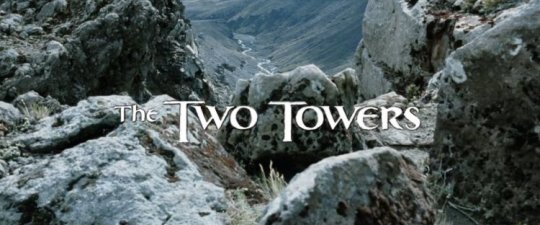
Spoilers Below
Have I seen it before: Yes
Did I like it then: Yes.
Do I remember it: Yes.
Did I see it in theaters: No.
Format: Blu-ray
1) According to IMDb:
New Line Cinema wanted Peter Jackson to start the film with a prologue done by Cate Blanchett, something that Jackson didn't want to do. Ironically, a year earlier, New Line Cinema had been opposed to opening the first film with a prologue narrated by Blanchett, something, of which, Jackson was in favor.
2) Beginning this film by revisiting such an iconic moment from the first (The Bridge of Khazad Dum) and continuing to push said moment past where it ended in Fellowship helps to make the film unique. It won’t just be a retread of familiar material but instead something which continues to push the story forward as all the best sequels do. It also sets the bar high for all ensuing action, as this was one of the (if not the) best moments from the original.
3) This film really doubles down on deepening the relationships introduced in Fellowship, with the romance kinship between Sam and Frodo. It is their relationship which the audience invests in, it’s something personal we can attach to. Sure Frodo losing his life or soul to the ring would be awful, but seeing how it effects Sam just ups the pain.

4) Andy Serkis as Gollum.
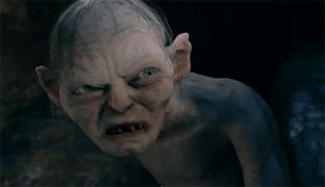
Holy shit, Andy Serkis as Gollum. Don’t let the fact that this is a CG role fool you, this is pretty much ALL Andy Serkis. Gollum’s facial features were based on his performance by the animator. All the physicality, all the vocals, the emotion, the heart, the character is Andy Serkis. He is so freaking otherworldly as the iconic character, blending completely into the role in a way only the best actors can. You don’t SEE Serkis in the part because he casts anything that is him aside to embrace the devious Gollum. And while I cannot possible undersell the importance and absolutely stellar work Serkis put into the part, a motion capture role is either limited or supported by the animators behind it. The character of Gollum is a perfect marriage between animation and performance, making you not doubt for one second that this is a real living character. Stealing pretty much every scene he’s in if not the entire film, Serkis should have been nominated for an Oscar because of his role in these films but wasn’t because it was motion capture. But this does not undermine the fact that Serkis by far gives the best performance in the entire trilogy.
5) The fact that the Fellowship was broken up in the last film allows for much more character development in this one. The heroes are not fitting for screen time or development in a scene with eight other characters. By separating them into the groups of Frodo and Sam; Aragorn, Legolas and Gimli; and Merry and Pippin, all the characters get more room to shine and be developed.
6) Karl Urban may not have a lot of room to shine but that doesn’t mean he’s not as good in this movie as he is in others. Urban is a wonderfully gifted character actor, able to blend into any role which comes his way and Éomer is no different. You don’t see Urban so much as you just see the character.
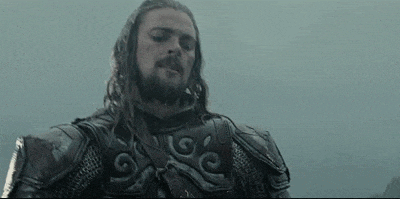
7) One of my favorite things in the entire trilogy really begins to take form in this film and that is the bromance between Legolas and Gimli.
Legolas [after Éomer threatens to cut off Gimli’s head, pointing an arrow at him]: “You would die before your stroke fell.”
8) There’s this wonderful scene in the movie where Aragorn and company are at the site of the orc fight (where Merry and Pippin last were). What makes it work is that we briefly got a glimpse of this moment earlier. The orcs began fighting attackers and it looked like Pippin was going to be crushed by a horse when it just cut away. But by flashing back to what really happened while Aragorn figures it out for himself does two things well. First of all, it follows the rule of show don’t tell. Secondly: it doesn’t waste the audience’s time by showing us what happened THEN having Aragorn realize it himself. By combining it the film’s pacing improves.
youtube
9) Treebeard.

I really like Treebeard, he’s a wonderfully multifaceted character. He is able to be slow, paced, patient, but also has some deep anger sometimes. Voiced by John Rhys Davies (who also plays Gimli), the actor does a good job of making Treebeard sympathetic and interesting when (in lesser hands) he could’ve come off as boring. I dig it.
10) As with many parts of the trilogy, the Dead Marshes scene has a wonderful sense of place to it. It’s viscerally creepy and eerie, making your skin crawl and your stomach turn. Peter Jackson’s roots as a horror director really come in handy in these scene as it’s a place you know the characters should leave ASAP.
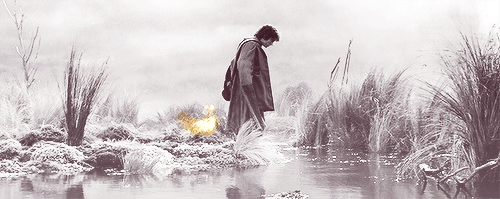
11) Can I just so: Gandalf is really freaking dramatic.

When he’s revealing to Aragorn, Gimli and Legolas that he’s been RESURRECTED (dramatic enough on its own) he even disguises his voice to make it sounds like he’s Saruman just to screw with them. And then we have this wonderful moment after Aragorn calls him Gandalf:
Gandalf: “Gandalf? Yes, that is what they used to call me.”
Dude! You did NOT forget your name! You remember literally EVERYTHING ELSE! You remember Aragorn and Merry and Pippin and everything. Take a chill pill, Gandalf.
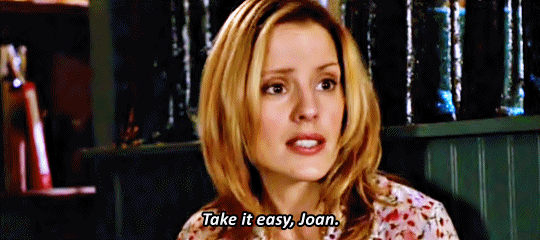
(GIF originally posted by @marshmallow-the-vampire-slayer)
12) I really like the whole Merry, Pippin and Treebeard subplot. It’s largely conversation but it brings up a lot of really interesting ideas about why the trees should participate in the war. Not only that, but it very organically develops Merry QUITE well. He and Pippin both started out as pretty immature in the first film, but by the end of this movie (through the subplot with Treebeard) he’s accepted his responsibility and is ready to fight for what’s right.
13) Miranda Otto as Éowyn.

Although Éowyn really gets her shining moment of glory in Return of the King (and the best damn moment in the entire trilogy), I love her from the first moment we meet her in this film. She’s my favorite character in the entire trilogy. I love that she can cry/grieve but still comes off as incredibly strong. She always has the best for her people and king in mind, always looking to fight against those who threaten those she loves and constantly frustrated when others try to get in her way. She is a great leader and a great fighter, as no moment fills me with such joy as seeing this badass royal practicing how to fight with a sword. I just…gah! I fucking love Éowyn.
14) This is one of those lines in a movie which has stuck with me my entire life.
Théoden: “No parent should have to bury their child.”
It really speaks to the grief Théoden is going through and an honest truth. Children are meant to outlive their parents, not the other way around. According to IMDb:
One time while Bernard Hill was in England, a woman came up to him and told him about how one of her children had died shortly before then, and that parents shouldn't have to bury their child. His confrontation with this woman affected him so much, that he asked to have a line put in about it.
15) Cutting between the three groups in the film could have easily dogged down the pacing, but the film knows when to make their cuts. The tension continues to build organically and the structure is never disrupted.
16) The conversations between Gollum and Sméagol.
youtube
Mostly I talk about how scenes like this work from a storytelling aspect as opposed to a technical aspect. And while these moments clearly illustrate the conflict and layers within Gollum/Sméagol, I am actually more impressed with the technical aspect of it. The scene works very well with two basic rules of filmmaking: Eye line and the 180 degree rule.
You can probably gleam what eye line means just from the name of it, but it’s making sure that when you cut between two characters looking at each other between shots the eyes match. Not only is that done very well here, but so is the 180 degree rule. The 180 degree rule is very simple: it means that when two character are in the same scene they should always be on the same side of the frame. Whether the shot is a wide, over the shoulder, or whatever, unless there is movement going on in the scene they should be on the same side of the frame so the continuity matches. In this scene, Gollum is always on the left while Sméagol is always on the right. Even though they’re the same physical person sitting in the same spot, the way the scene is framed just drives home the idea that they’re talking to each other because it follows the 180 degree rule. I just really dig that.
17) One of the most tragic things about Sméagol/Gollum is that for like MOST of this film he’s actually trying to redeem himself. He’s trying to be the good buy, he’s trying to help Frodo and Sam, but it is the harm done to him by fearful men which results in his regression back to a greedy backstabber. The more you sympathize with a villain, the more powerful they are.
18) I like the little update we get on Arwen and Aragorn’s relationship via flashback, but the later extended sequence with her, Elrond, and Galadriel is always something I zone out during. I like that she’s not forgotten but also the 15 minute segment where her arc is developed can feel a little pointless TO ME at times.
19) The Wild Riders attack.
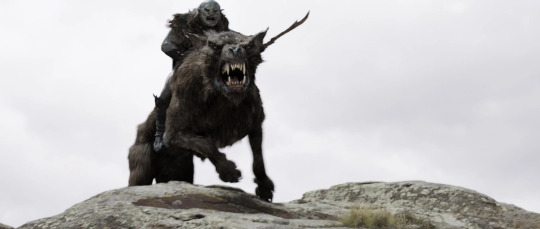
While a little long, the set piece is very well done. It has interesting, well choreographed action which takes advantage of the wide space its in and a wonderful sense of tension. And it has some very real consequences, with Aragorn not being the untouchable hero trope but instead taking a fall off a cliff and being presumed dead. Also, Legolas and Gimli have their first of many competitions of who can kill the most bad guys in it and I love that.
20) A film is a story told in cuts.
Wormtongue [after talking about how it’ll take tens of thousands to take Helm’s Deep]: “But my lord, there is no such force.”
[Saruman shows Wormtongue such a force.]
21) I get that Elrond is Arwen’s dad and he’s worried about her, but she’s an adult who is living her life. Can’t he just respect the choice she’s made to live for Aragorn instead of pressuring her out of it? Please?
22) David Wenham as Faramir.

There’s a lot more patience with Faramir than his brother Boromir had. You can see a far amount of grief in Wenham’s performance. He’s wiser than his brother but not as favored (as we will get a better peek into in Return of the King), which causes a conflict in him. He wants to please his father and make him proud, but he also understands that his father is not always the best decision maker. This conflict shows greatly in Wenham and he’s able to make the character very interesting because of that.
Faramir: “A chance for Faramir, captain of Gondor, to show his quality.”
23) Get friends who react to you not being dead like Gimli and Legolas do with Aragorn.
Gimli: “I’m going to kill him! [Not 30 seconds later] Bless you!”
Legolas [after thinking Aragorn died]: “You look terrible.”
24) I know the source material dates back to 1954, but I HATE the, “get the women and children to safety,” trope. Like, Éowyn proves that women are capable of defending themselves just as well as men can. But they’re constantly infantilized, LITERALLY thought the equivalent of children, needing to be protected and hidden away from danger. If they trusted women to fight in the battle of Helm’s Deep there wouldn’t be all this talk about, “Oh, we don’t have enough men to fight for us.” THEN FIND SOME WOMEN WHO ARE GOOD WITH A SWORD! YOU’RE LITERALLY HAVING TEENAGERS FIGHT, YOU DON’T THINK YOU CAN FIND A WOMAN WHO IS AS SKILLED WITH A SWORD AS TEENAGERS!?
25) Aragorn really gets to go on a great journey throughout the three films. I mean in the first film he’s a loner, a ranger who doesn’t lead men. But in this film he begins to accept his responsibility as a king and lead the fight in the Battle of Helm’s Deep. It’ll only grow in the third film and I appreciate that.
26) One thing that these films do really well is they don’t let situations get too dire. This is a story largely about hope and fighting because of that hope, so to have a battle be too depressing goes against that idea. Legolas and Gimli are great of keeping the human heart of a scene.
youtube
Gimli: “What’s happening out there?”
Legolas: “Shall I describe it to you? Or would you like me to find you a box?”
[Gimli laughs.]
27) Battle of Helm’s Deep
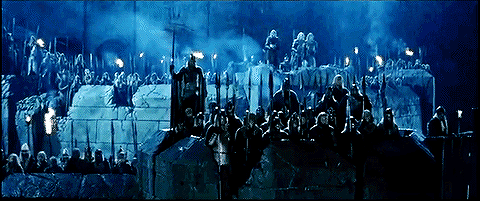
This is an absolutely incredible climax to the film in the truest sense of the word. While the battle is INCREDIBLY long the filmmakers do a great job of carrying the action and pacing so that it never loses your interest. Legolas and Gimil help with that, but so do the character choices. Théoden gives up, Aragorn is ready to fight. The battle has tides, it changes favor, and it really just does a great job of holding your interest the whole time.
28)
Théoden: “Is this it? Is this all you can conjure, Saruman?”
[Battle starts to get worse]

(GIF originally posted by @welcometoyouredoom)
29) I love this exchange.
Treebeard: “This is not our war.”
Merry: “But you’re part of this world!”
30) While this film does feature a tone of development for Merry, it is Pippin who knows what to do so Treebeard will get invested in the war. So he’ll fight. He’s a tricky one, that hobbit.
31)
Théoden: “What can men doe against such reckless hate?”
Honestly (and Aragorn’s actions prove this): unite. Stand up against hatred and bigotry together and show the world that you will not stand for it.
32) One thing I haven’t talked much about for this film which also plays a much larger factor in Return of the King is Frodo’s continued corruption. The ring is getting to him, it’s darkening him, tempting him, causing him to doubt and fear. Wood plays this VERY well, this development. It feels organic, it makes sense even if it is brought upon by an outward force. It just really works.
33) According to IMDb:
When Frodo (Elijah Wood) and Sam (Sean Astin) are in Osgiliath, Sam says, "By rights, we shouldn't even be here." This was a nod to the deviation the screenplay had taken from the book's storyline. In the book, Sam and Frodo never passed through Osgiliath.
34) I freaking love this. I forgot about this exchange and honestly it gives me hope.
youtube
35) Deciding to end the film on Gollum/Sméagol deciding to betray the hobbits in Return of the King I think works really well. It resolves his crisis of identity that has been featured in this film. He tried to be good and it didn’t work so now he’s going to be bad. I think even when a film ends on a cliffhanger there needs to be some form of resolution to it.
There’s really not a weak link in The Lord of the Rings trilogy. The Two Towers continues the excellence which began in Fellowship by giving each character more room to shine, continuing the battle of Middle Earth in an epic and investing way, while making sure these films still have a beating human heart to them. It’s just really great.
#The Lord of the Rings#Andy Serkis#Elijah Wood#Viggo Mortensen#Ian McKellen#Miranda Otto#Bernard Hill#Karl Urban#Orlando Bloom#Epic Movie (Re)Watch#Peter Jackson#JRR Tolkien#John Rhys Davies#Christopher Lee#Sean Astin#Dominic Monaghan#Billy Boyd#David Wenham#Take It Easy Joan#Movie#Film#GIF
97 notes
·
View notes
Text
Movie Analysis

For my film analysis, I chose the second movie in the Lord of the Rings trilogy, The Two Towers. In this epic, we continue the unlikely journey of the almighty ring of power, carried by hobbits, to the Mordor, to be destroyed. Though they are separated for much of the journey, our hobbits are accompanied by friends of many races as allies, elves, men, dwarves, and ents. They fight for the good of te world, against the wrath of the dark Lord Sauron.
The way that I see it, the themes in this movie that relate to this course are the constant contrasts between good and evil, the light and the dark, and how the makers have chosen to depict those sides. I do not think it was purposeful on Tolkien of the film makers- but more based on the sub-conscience decisions that relate to things like the shadow index.
Tolkien was a European man writing stories he likened to being fairy tales for his culture, so it is no wonder that his characters are based on ‘white’ aesthetics.
It is often criticized that the dwarves were based on Jewish stereotypes of being greedy and thrifty, though not of ill will, but we won’t dig any deeper into that, as we do not mention Jewish people in this course.
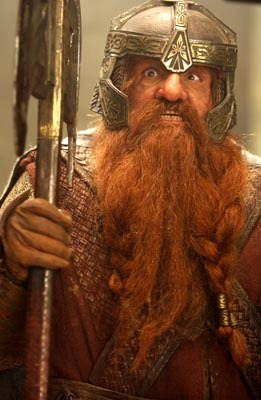
What stands out most to me is how the evil Uruk-Hai- who are born from the mud with the life purpose of following Soromon’s orders to procure the ring of power, killing anyone that stands in there way, are depicted. They are the only characters played by any black actors. Orcs tend to be depicted as having wide, flat noses, slanted eyes, dreads, and dark skin. Some are shown as more pig or other animal like, but they all have dark, dirty skin.

This reminds me of what we learned about the shadow index and how it has influenced our sub-conscious to make decisions like darkening the skin of those that we want to communicate as evil.

It can also be noted that the human enemies in LOTR are characterized by their costumes that reference Asian and Middle Eastern aesthetics, while all of the good guys and a complete ‘white wash’.
This course had taught me that outcome like this movie did not happen because of bad intentioned white people, but because of the makers coming from the perspective that the white character is normal and neutral.
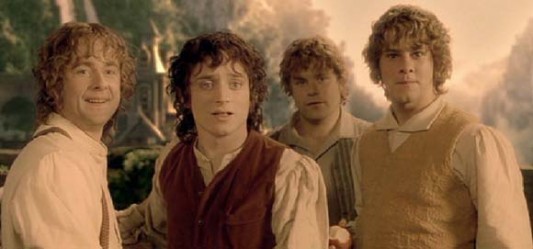
In a lot of entertainment now-a-days, makers go out of their way to depict all different kinds of people as normal, but it definitely takes an awareness of the issue. Tolkien has claimed, himself, that these stories were written as European fairy tales, so it makes sense that the characters are white washed. It is interesting now, that I can watch my favorite movies and have an awareness for the lack of racial diversity.
Images from:
https://lotr.fandom.com/wiki/Hobbits
https://www.warnerbros.com/movies/lord-rings-fellowship-ring/
https://en.wikipedia.org/wiki/The_Lord_of_the_Rings
1 note
·
View note
Text
Top Ten Disappointing Movies (3/10)
I haven’t posted in a while, due to personal problems at my house, but I am back and I have rewatched every movie on this current list...that alone made me not want to post on top of it, because I was reminded on top of my memories of just how awful these movies are.
That being said, let’s continue, with my top eight choice.
The Hobbit: An Unexpected Journey (2012)
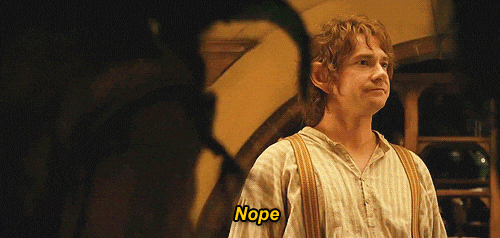
Now, before I start my rant about this movie, I would like to make it clear that I really enjoy the Lord of The Rings. That whole trilogy was beautiful and told a good story.
The Hobbit...I have no idea why they felt the need to make this a separate trilogy.
I got it with LOTR, because there are three stories with it, but with The Hobbit...there is just this:
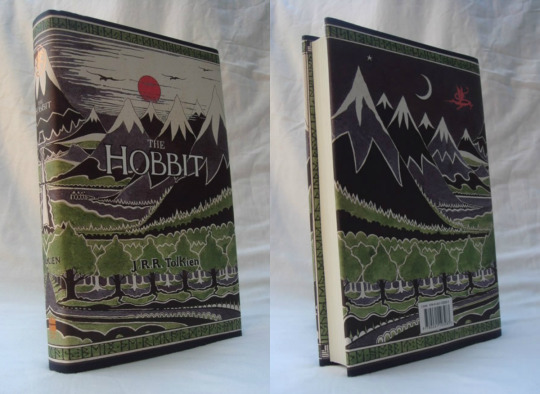
That’s it...that’s the entire trilogy right there.
So why the hell did they need to make three movies out of this? They had to dip into the appendix of The Return of The King just to add more to the story. They could have made a whole movie out of just this book or hell, maybe a two-part movie, but this book did not three movies to tell the story.
The entire story dragged on and on and when I watched it last, I had to do everything not to distract myself on my phone or even fall asleep, because up until that point, I had never actually watched the movie as a whole, just because of how bored I get.
Each movie for me needs to be watched over the span of 2-3 days, just because I get so bored and that has never happened with the original trilogy.
I can’t be the only one who thought this trilogy fell short, because here are the scores on Rotten Tomatoes:
An Unexpected Journey: 64% (277 Reviews)
The Desolation of Smaug: 74% (222 Reviews)
The Battle of the Five Armies: 59% (232 Reviews)
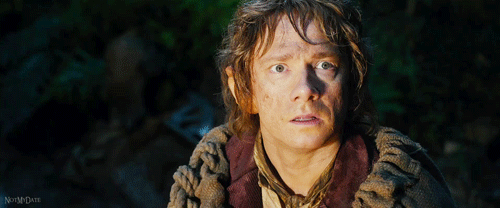
Just to compare...here are scores for LOTR, also from Rotten Tomatoes.
The Fellowship of the Ring: 91% (225 Reviews)
The Two Towers: 96% (228 Reviews)
The Return of the King: 95% (262 Reviews)

Now this is obviously about the first one in the trilogy, so back to that. This one is the hardest to get through for me, because I just cannot get invested in it, no matter how many times I actually try.
Of course, it has the same look as LOTR, so it at least has that going.
BUT looks do not make up for lack of a captivating story. I have tried to like this move, but I just can’t and I was so excited for more of this story, because of how much I enjoyed LOTR, but ultimately, I was disappointed.
Obviously.
Honestly, just writing my opinions for this movie is leaving me bored and usually even with bad reviews, I get pumped about all the witty banter I can run with it...but I am lacking it here.
Nothing wrong for those that do enjoy this move, because movies are meant to be enjoyed, so for those that do...what is your secret, because I don’t know how to get into this movie.
#the hobbit#an unexpected journey#bilbo baggins#gandalf#disappointing movies#movies that are disappointing#top ten list#top ten#part 3#short movie review#movie#film#movies#films#LOTR#disappointing#disappointed
1 note
·
View note
Text
2018 Film Retrospective
This is my retrospective of all the movies I saw in 2018. This is based on UK release dates so films such as The Favourite, Vice or Eighth Grade will not appear on this list despite technically being 2018 movies as I have not yet been able to see these yet. There are also many movies that I have missed in 2018.
I will still be updating this list throughout 2019 here: https://letterboxd.com/nathan_r_l/list/2018-from-best-to-worst-3/
If you want to see where these movies fall on this list as I see them.
So, anyway here from the worst of the year to my personal favourite are all the films I saw in 2018:
37. The Queen and I (Dan Zeff):
I only saw this film a few days ago as of writing so it may seem a little harsh to call it the worst of the year as it hasn’t had any time to grow on me yet. Although I don’t see this getting any better with age. Sky intended this new David Walliams’s TV movie as a sort of Christmas present, but this must be one of the very few films I have ever seen that has actually made me angry. Nothing more than royalist propaganda that manages to completely miss the potential of the concept as well as missing the point of the sequence from Les Miserable that it decides to “pay homage too”.
36. Death on the Tyne (Ed Bye):
Not much to say here. Really it isn’t a surprise that UKTV made a bad comedy.
35. Fahrenheit 451 (Ramin Bahrani):
I promise that I saw more than just TV movies this year, it just so happens that most of them were really bad. All of the changes that were added to the story were stupid and when they actually tell the story it is painfully boring.
34. Jurassic World: Fallen Kingdom (J. A. Bayona):
Let’s be real, despite ranging in quality none of the Jurassic Park sequels have warranted their own existence. That being said Fallen Kingdom might be worth watching just to see how hilariously bad these films can get. Despite having the same director as The Orphanage and A Monster Calls no amount of good tracking shots can fix a script that is this ridiculous. The script comes across like two different ideas for new Jurassic Park movies were awkwardly stitched together when the best treatment for both would have been not to make either of them. Through in an incredibly stupid and unneeded twist and the most underwhelming Jeff Goldblum cameo in cinema history.
33. Grandpa’s Great Escape (Elliot Hegarty):
Oh, look another bad TV movie. Davis Walliams consistently finds himself attached to these boring BBC productions never quite capture the heart and care of his writing. Walliams is a good children’s author, but the small screen adaptations of his work always feel rushed and unfocused.
32. Venom (Ruben Fleischer):
The biggest disappointment of 2018. Venom is corny, bland and forgettable. According to IMDB, Zombieland director Ruben Fleischer is behind this mess but judging by Tom Hardy’s performance and the incomprehensible CGI finale no-one directed this.
31. Solo: A Star Wars Story (Ron Howard):
A soulless, lifeless film that stinks of studio interference. All of the cast feel as if they are just playing the type of character they are expected to (especially Phoebe Waller-Bridge as L3-37). There are moments in this film where it feels like there is supposed to be a joke that has awkwardly been edited or written out after Lord and Miller left the project, these moments haunt the film and make me feel like this could have been great, but alas.
30. Death Wish (Eli Roth):
At this point it might be time to consider that Eli Roth might be making bad movies on purpose. I went into Death Wish expecting something needlessly graphic and entertainingly violent and stupid but that’s not what this is. For the most part the gun violence in this film is pretty tame and the dialogue is far to generic and boring to be funny. There is one scene in a garage that showcases what usually makes Roth’s films memorable, but it comes too late to bring this movie into guilty pleasure territory. I do believe that Roth is a good filmmaker but the more he releases these mindless, generic thrillers the harder it is to defend him.
29. The Meg (Jon Turteltaub):
Half of this movie is a self-aware special effects movie that is genuinely entertaining. The other half is a boring and cliché. It should be good but never quite manages to keep up any momentum that it builds.
28. Tomb Raider (Roar Uthaug):
Technically better than the 2001 Lara Croft film although I know which one I would rather watch. Some interesting set pieces and homages to the newer tomb Raider games mixed with bland dialogue and an uninteresting plot.
27. Deadpool 2 (David Leitch):
Not as funny as the first movie but has better action. Deadpool 2 is mixed bag, the satire falls short when the movie insists on upping the stakes and having its audience feel emotionally connected to the story. David Leitch is a good action director and I look forward to seeing what he does next, but I can’t say that I’m all to exited about the next instalments in the Deadpool franchise.
26. Tag (Jeff Tomsic):
I don’t think that this film deserves the hate it seems to have gotten. Tag is a pretty funny movie with memorable characters and good camera work. It’s a little corny and the ending gets way to soppy but it’s a good film to watch with a group of friends if not just for some good Hannibal Buress quotes.
25. Click & Collect (Ben Palmer):
Hey, a TV movie that didn’t suck! Airing on BBC 1 on Christmas Eve this is an example of cringe comedy done well, the plot doesn’t always make sense but that doesn’t stop the comedy from really working.
24. Outlaw King (David Mackenzie):
A pretty good historical drama about Robert the Bruce. That’s all this is really a serviceable movie about an interesting topic. Not bad by any means all though a little forgettable, the performances and fight choreography are great but the writing lacks any real direction.
23. Aquaman (James Wan):
A list of other movies scenes from Aquaman made me think of:
Ratatouille
Splash
Raiders of the Lost Arc
Lara Croft: Tomb Raider
Black Panther
Star Wars: Episode I - The Phantom Menace
Lord of the Rings: Fellowship of the Ring
Lord of the Rings: The Two Towers
How to Train Your Dragon 2
Wonder Woman
Full review coming next
22. Ant-Man and the Wasp (Peyton Reed):
Not as funny or engaging as 2015’s Ant-Man. This is a decent blockbuster with some good special effects and funny moments. A lower tier Marvel film for sure that gets completely overshadowed by the other two movies that the studio brought out in 2018 but still a fun watch.
21. Ocean’s Eight (Gary Ross):
About as good as Ocean’s 13. All of the hallmarks of the Ocean’s trilogy are present. The last 15 minuets begin to over explain what we have already seen and the name of the movie spoils and reveal at the end of the movie. A well-directed heist movie none-the-less that should be enjoyable for any Ocean’s fan
20. Ready Player One (Steven Spielberg):
This movie is at its best when it is at its most Spielberg. There is a really great car chase and a plot that revolves around kids standing against authority. It goes on for way to long and some of the references are on the nose. It certainly needs to be cut down but it’s a movie worth seeing if you know your pop-culture.
19. Searching (Aneesh Chaganty):
By far the best example of found-footage to be released in years. Having the entire film appear from the perspective of computer screens and phone calls makes the experience feel far more real and personal as if you are right there figuring out the mystery with the character. The story itself separated from its gimmick has been seen before and the twist is a bit of a reach but with its unique style it feels completely fresh. If you hated Unfriended there is a high chance that you will love this.
18. My Dinner with Hervé (Sacha Gervasi):
A HBO movie featuring a fantastic performance from Peter Dinklage. The life story of French actor Hervé Villechaize is told through a crazy interview based on the one that the actor had with the director in the early 90’s. It’s a small film but one that has been made with a lot of passion from its director and star. Absolutely look this one out if you can.
17. Isle of Dogs (Wes Anderson):
Wes Anderson is responsible for some of my favourite films of all time. While his latest may not be his best work to date it is a beautiful and insanely well-crafted film full of life and wonder. Anderson has a particular style and this movie sums up exactly what makes that style work so well with every shot working perfectly.
16. Black Mirror: Bandersnatch (David Slade):
It’s hard to tell at this point whether or not this will start a new craze for choose your own adventure movies the way that Avatar started a craze for 3D. Honestly I don’t think Charlie Brooker has left anywhere to really be explored with the this concept as he dives head first into a meta-narrative all about free-will. Certainly, an ambitious endeavour for the crew of Black Mirror that has taken over the cinematic discussion for a little while. I saw this with a group of friends trying to uncover as much of the story as we could in one sitting and I highly recommend that experience if you haven’t seen/played this yet.
15. Black Panther (Ryan Coogler):
A Marvel movie that appears to have nudged its way into Oscar conversations, regardless of whether or not I think that it deserves that acclaim this is a great film. Black Panther has some of the smartest writing of any MCU movie and one of the best villains to ever appear in a superhero movie. This is a film that will be talked about for years because of what it means for representation, it also helps that it is a really good movie.
14. Game Night (John Francis, Jonathan M. Goldstein):
The biggest surprise of the year is that the two guys behind 2015’s awful Vacation reboot managed to make one of the funniest and well-made comedies of 2018. The camerawork in this film is brilliant, one long take in particular has to be one of my favourite scenes of the year. The plot takes some logical jumps but who cares when the film is this good.
13. A Quiet Place (John Kransinski):
Sure, it doesn’t all make sense when you analyse it but watching A Quiet Place on the big screen is one of the tensest experiences I have ever had. When the credits rolled after the first time I saw this film I noticed that for the past 90 minuets, that’s the sign of some effective tension.
12. First Man (Damien Chazelle):
Chazelle has proven himself to be one of the best directors working today. While I may not love his latest as much as his previous work on La La Land and Whiplash it has to be said that First Man is a solid base hit for a great filmmaker. The third act of this film features some of the best special effects of the year mixed with one of the most emotional sequences of the year. Gosling and Foy are both brilliant and both deserve nominations as does Chazelle.
11. Three Billboards Outside Ebbing, Missouri (Martin McDonagh):
Slightly twisted and very enjoyable Three Billboards is a strange film. McDonagh is able to find humour in the darkest of places but never undermines the serious nature of the subject matter.
10. Incredibles 2 (Brad Bird):
Going into the top 10 it feels important to restate that these rankings are based purely on my own personal opinions on each film. Incredibles 2 is objectively not as good as the 2004 original, but it doesn’t have to be, this is a very fun movie featuring some great animation, fantastically directed action sequences that only Brad Bird could pull off and do I even have to mention the Jack-Jack scenes? Brad Bird is one of the greatest filmmakers to ever work in animation and this feels like his victory lap, not his best film but absolutely one that showcases just how great he is.
9. The Shape of Water (Guillermo del Toro):
Best picture winner, The Shape of Water deserves all the acclaim that it has gotten. This “adult fairy-tale” features a wonderful score, fantastic performances, beautiful set-design and characteristically excellent direction from one of the world’s greatest directors! Everyone has already lumped praise on this film and so I am not left with too much else to say other than see this film.
8. The Zen Diaries of Garry Shandling (Judd Apatow):
I hear that 2018 was a great year for documentaries, I wouldn't know because I only saw this one but if Three Identical Strangers and Won’t you be my Neighbour are better than this then I need to see them. Judd Apatow looks into the life of his friend and fellow comedian Garry Shandling only 2 years after his tragic death. His approach leaves no stone unturned as he dives head first into the late comedian’s mind using his own diaries and interviews with his closest friends and collaborators. As a stand-up comedy fan it is absolutely fascinating to get a look the real life of an often misunderstood legend like Shandling for it to be as neatly put together and wonderfully entertaining as this is a welcome bonus.
7. Avengers: Infinity War (Joe Russo, Anthony Russo):
For the technical achievement alone Infinity War deserves a place in my top 10. The Russo brothers managed to pull off a stunt that just a year ago I was ready to call impossible, bringing together 10 years worth of character arcs and plot points while still making an enjoyable film. Even though it has been 9 months I still don’t know what to say about this film and my lack of words may be the best compliment I can give it.
6. Mission: Impossible – Fallout (Christopher McQuarrie):
If you asked me in June I would have said that the Mission: Impossible franchise had peaked with Brad Bird’s Ghost Protocol in 2014, I also would have been dead wrong. Fallout is not just the best film in the franchise but an absolute high point in action cinema. Seeing this on the big screen was one of the most visceral and intense movie going experiences I have ever had, every stunt is a nail-biter and the whole time I was on the edge of my seat.
5. Thoroughbreds (Cory Finley):
This is the movie that I saw alone and have yet to properly have a conversation with someone about. This film slipped under almost everyone’s radar and then disappeared. I am telling you now find this movie it is a fantastic, quaint little film with the power to make you uncomfortable and make you laugh at the same time. Olivia Cooke and Anya Taylor Joy are both brilliant and the ending has one of my best moments of the year with a single long shot and the power of suggestion. If you missed it, which you probably did, go look it out.
4. BlacKkKlansman (Spike Lee):
Loud, funny, unapologetic, stylish and controversial. Those are the five words that describe all of Spike Lee’s best movies and BlacKkKlansman is no exception. With multiple Oscar worthy performances, a great score and a screenplay that shows Spike at his angriest and smartest in a long time, this film will get under some peoples skin, as great cinema should.
3. I, Toyna (Craig Gillespie):
Every now and then a movie comes along that perfectly sums up why I love this art form, I Tonya is one of those movies. Deeply impactfull on an emotional level while remaining hyper stylised, Gillespie manages to make the audience feel sympathy for characters that would be the villains in any other story by taking you on an emotional roller coaster through the life of Tonya Harding that leaves the viewer feeling just as broken as the titular character by the conclusion.
This film is so good I watched it twice in two days.
2. Lady Bird (Greta Gerwig):
I fell hard for this film. Greta Gerwig’s painfully honest look at growing up feels like watching a selection of incredibly well shot home movies from a real person. The real achievement of Gerwig’s directorial debut is how it manages to feel relatable even if you aren’t in the same situation as the protagonist. When the credits role it’s hard to feel slightly disappointed that you can’t keep watching what is going to happen to this character next and when the only criticism you have is that you didn't want it to end, the film must have been pretty good.
1. Spider-Man: Into the Spider-Verse (Bob Persichetti, Peter Ramsey, Rodney Rothman):
I’m just as surprised as you are.
Somehow and for whatever reason this is the movie that resonated with me the most in 2018, this is the film I see myself going back to the most. Sometimes the best film is the most entertaining one, this film had me hooked instantly and kept me in a near trance-like state during its run-time. In don’t have anything to profound to say about this film it’s just really a great film that everyone can enjoy. If this is still playing near you and you haven’t seen it yet, go check it out you won’t be disappointed.
#the queen and i#death on the tyne#fahrenheit 451#jurassic world: fallen kingdom#grandpa’s great escape#venom#solo: a star wars story#death wish#the meg#tomb raider#deadpool 2#tag#click & collect#outlaw king#aquaman#ocean’s eight#ready player one#searching#my dinner with hervé#isle of dogs#black mirror: bandersnatch#black panther#game night#a quiet place#first man#three billboards outside ebbing missouri#incredibles 2#the shape of water#the zen diaries of garry shandling#avengers: infinity war
0 notes
Photo
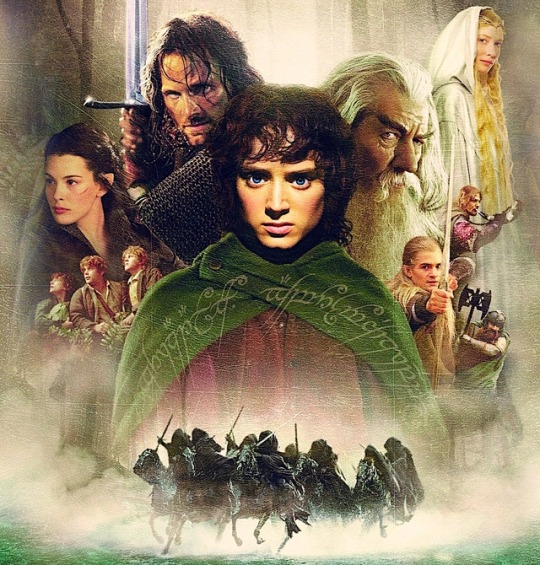
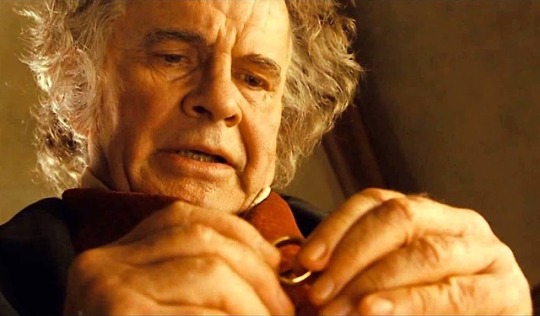
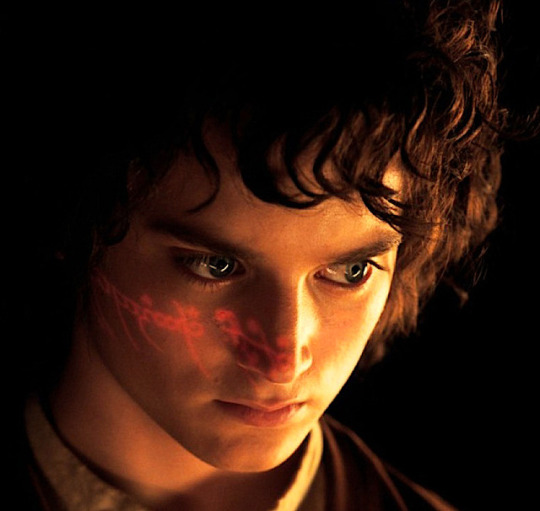


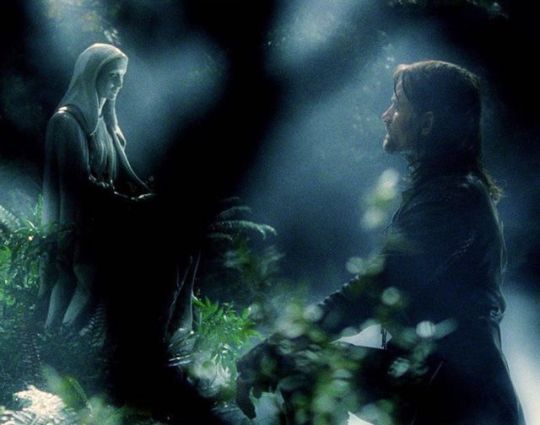
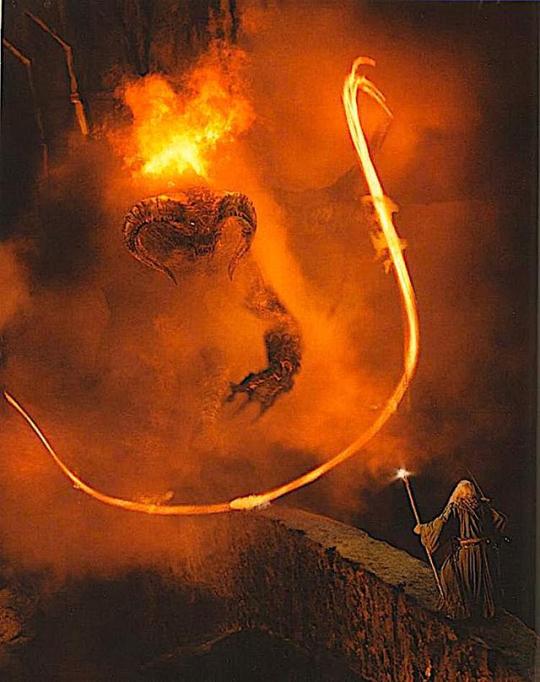
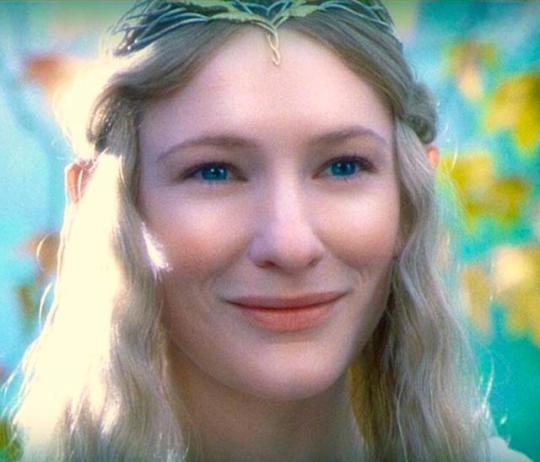
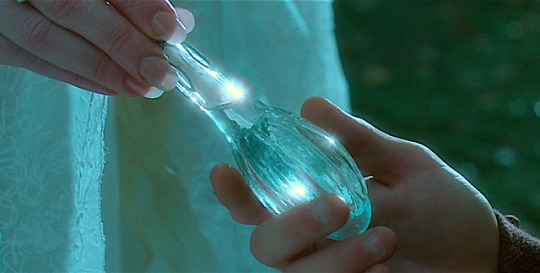
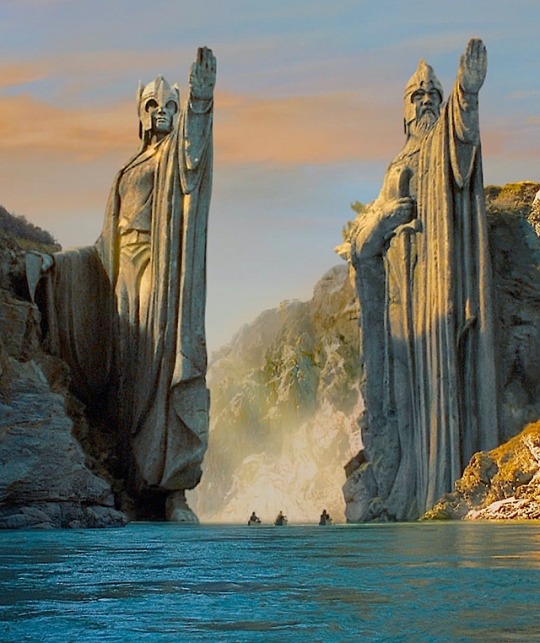
Images from The Fellowship Of The Ring, courtesy of New Line Cinema
THE LORD OF THE RINGS is a vast tapestry combining huge events, gripping conflict, intense emotions, and timeless themes of heroism, temptation, romance, sacrifice and redemption. Peter Jackson's epic production still stands as the greatest fantasy in film history. The final part of the trilogy was released 15 years ago today; and so in honor of this auspicious occasion, Multi Facet Fables presents David D. Fowler's extended appreciation of this fantasy masterpiece.
This piece was written in 2005, after the release of the trilogy's final Extended Edition, and then updated after the release of The Hobbit. Rather than assessing the original trilogy as three separate films, as most reviewers have done, this evaluation explores how well it succeeds in telling one continuous, self-contained story. The critique is presented in three parts; and to enhance your appreciation of the film, at the end you will also find our Appendices, featuring an archive of Rings-related videos.
ARWEN’S CHOICE, GRIMA’S TEAR – part 1
Jackson’s Christian Vision
Yea, now that the dust of Mount Doom has long settled upon the plains of Mordor, and the Dark Lord’s dire shadow has verily been banished from the big screens of Middle-Earth lo these many years, we must needs contemplate anew the fall of the tyrant Sauron in our home palantirs.
“This tale grew in the telling,” J.R.R. Tolkien famously wrote in the foreword of The Lord Of The Rings, the centerpiece of his Middle-Earth saga. In director Peter Jackson’s hands, Tolkien’s tale has grown into a vision beyond all expectations. This becomes clearer the more one views Jackson’s marvelous extended editions of his Rings trilogy.
Many have reviewed the individual installments of the theatrical film, of course; and there have been reviews of the extended DVDs – but nothing terribly in-depth, it would seem. Generally, the components of the trilogy have been evaluated as separate works. I have seen dozens of articles on the subject, but have never encountered any detailed evaluations of how the movie as a whole holds up, considered as a single entity. This is one attempt to answer that question. I have also chosen to emphasize the film’s spiritual qualities, which are myriad. The film is rife with Christian mythology and symbolism – which, as I will establish later, appears to be quite intentional.
Christian Critics
The Lord Of The Rings has rightly been extolled by Christian reviewers such as Steven D. Greydanus of Decent Films, and Sister Rose Pacatte of Sister Rose Movies. Many have showed some real appreciation of what Jackson has accomplished. However, it seems to me that most Christian critics have only scratched the surface of this film’s implicitly biblical content; they have focused on obvious elements, such as self-sacrifice and the struggle against evil.
Several of those who have delved a little deeper have found the film spiritually wanting to some degree or other – generally concluding that, because the film’s makers are not known to be believers, therefore they had only limited understanding of the book’s Christian content. But if Jackson and co-scripters Frances Walsh and Philippa Boyens are indeed not Christians, it is verging on the miraculous that they caught so much of the book’s spiritual content – and, dare I say it, even improved upon Tolkien in some places.
Would the Bible-thumping naysayers have preferred that only card-carrying Christians be allowed to adapt Tolkien’s sacred ‘textus receptus’? This massive production got precisely what it needed: supremely imaginative filmmakers. If it had been left to merely ‘Christian’ filmmakers, who among that exalted coterie could have pulled off this trilogy? Mel Gibson, perhaps? Too dogmatic, and way too much baggage. Wim Wenders? Promising, but his style’s a tad too introspective. Andrei Tarkovsky? Unfortunately, he’s dead – but the possibilities boggle the mind, nonetheless. The Left Behind guys? Fuggeddaboudit!
Non-Biblical Behavior
I don’t wanna scare ya, kiddies, but imagine for a moment a Rings trilogy done as a Ted Baehr-approved production. Keep in mind that Care-Baehr’s online Movieguide very kindly alerts good little Christians about all manner of immoral, non-biblical behavior lurking at the local cineplex; and also take note that their review of Jackson’s movie warned the born-again public to watch out for such things as the film’s “implied alcohol consumption”.
If the Baehr-brains had produced a film consistent with their peculiar creed, we would’ve had hobbits bereft of pipeweed (the devil’s playground!); a moratorium on pubs (be not drunk with ale!); no silly songs (idle foolishness!); no garrulous dwarves (coarse jesting!); no prophetic intonations from Galadriel (occult divination!); no haughty elves (spiritual pride!); no talking trees (substance abuse!); and no resurrection of Gandalf (implied offscreen nudity!). Oh – and no, um, sorcery (!!!!!). But I digress.
No-Budget
Jackson’s earliest films give no indication of the greatness to come. The New Zealand auteur started with a no-budget, moronic alien invasion flick, Bad Taste (1987), which more than lived up to its name. He progressed (so to speak) to Meet The Feebles (1989), an over-the-top Muppet Show satire starring extremely naughty puppets; and outdid himself with the zombie fest, Braindead (1993), aka Dead Alive – touted as the goriest film of all time. Fortunately, he developed ambitions to move beyond such limited fare.
In 1994, by now partnered artistically (and domestically) with Fran Walsh, Jackson produced the superb Heavenly Creatures. Based on a notorious 1950s New Zealand murder case, it was an extraordinary depiction of two troubled teenage girls – who created a bizarre fantasy world, which spiraled out of control. This was followed by Forgotten Silver (1995), a brilliant ‘mockumentary’ about a mythical pioneer of New Zealand’s film industry; and The Frighteners (1996) a skillful horror/comedy with state-of-the-art special effects.
Jackson had proven his artistic credentials, but had never had a hit. To their everlasting credit, the New Line Cinema executives took a big chance by accepting his proposal to direct Tolkien’s classic; the result, by any standards, is an unprecedented epic, dwarfing (sorry) all previous fantasy films. While I wouldn’t go so far as to call Jackson a visionary, it is clear that he has taken Tolkien’s phenomenal vision and truly worked wonders with it. Viewing the complete extended edition, we can fully appreciate the scope of his achievement; and thanks to the various DVD documentary extras, we can also marvel at the sheer magnitude of this production.
No Sequels
Before I proceed further, a minor point must be stressed. Some critics still insist on referring to the Rings Trilogy as a three-hour hit movie (The Fellowship Of The Ring) plus two sequels (The Two Towers and The Return Of The King). They forget that Tolkien never intended the story to be split up; that was the publisher’s idea. While some reviewers have evaluated the individual theatrical films in detail, most assessments of the extended versions have amounted to little more than laundry lists of the extra scenes; the films have generally been appreciated as separate entities, but not as parts of a whole.
This is unfortunate, considering that The Lord Of The Rings is one of the most important films ever made; it deserves to be evaluated as the director intended it: as one single, self-contained tapestry. Jackson has emphasized that he considers it one cohesive story, in three acts. This is how I am approaching the film in this critique; I am also writing for those who are at least familiar with the theatrical version (otherwise, beware of spoilers!)
Minor Flaws
Jackson’s film has its flaws. There are a few redundancies, such as the several mentions of Bilbo’s book title; and some inconsistencies – as when Merry and Eowyn, who are supposed to be hiding their presence in the army from Theoden and Eomer, hang out casually with the other soldiers without making any effort to cover their faces. There are also some unnecessary scenes, such as the ‘drinking game’ between Legolas and Gimli; and speaking of well-tossed dwarves, Gimli is used too often for comic relief. The killing contests between Leggy and Gimli are played for laughs, as are a few too many other moments in battle scenes.
In one improbable sequence, two guards fail to notice a clumsy and noisy Pippin spilling oil as he attempts to light the Minas Tirith beacon. There is also at least one glaring continuity error: the magic disappearing barrels in Faramir’s cave hideout. You see the barrels behind Frodo and Sam for several shots; but when Faramir enters to interrogate them, the barrels are nowhere to be seen. (Now, whenever I see Sam urging the Ring Bearer to “disappear” moments before Faramir’s entrance, I keep thinking all Frodo needs to do is jump into one of those barrels). There are also a few too many ‘near death experiences’ – i.e. characters thinking their loved ones have been killed, only to find they have miraculously survived.
In addition, one could accuse Jackson of false advertising. There were several very nice scenes in various previews which never made it into the final film: two elf maidens running through the woods, laughing; Aragorn and Arwen frolicking, as she smiles radiantly; Arwen exhorting Elrond to give Aragorn “the sword of the king”; Elrond telling Arwen “You gave away your life’s grace; I can no longer protect you,” and then sadly embracing his dying daughter. Not nice to tease one’s loyal fans; more importantly, all of these scenes could have easily been added to the finished product – and should have been.
Whither Bombadil?
Further, what of the scriptwriters’ myriad changes to Tolkien’s sacred, inviolable text? Well, to those dedicated keepers of the Flame of the West, who have frequently and loudly bemoaned the absence of Tom Bombadil, Glorfindel, Ghan-buri-ghan, Imrahil, Radagast the Brown, the knights of Dol Amroth, the Sceptre of Arnor and the Scouring of the Shire, one can only bow the head sympathetically and say ... (wait for it) ... Get a fricking life, fanboys!!!! Think you could’ve done a better job?
Have these people never heard of artistic license? Jackson has always stressed that this film is merely his interpretation of Tolkien’s masterwork. Some of these grumblers evidently have little or no understanding of the structural and dramatic requirements of film, as opposed to literature; nor much grasp of the process of adaptation, and the fact that compression of material is essential in something of this magnitude. Even given the film’s 11-and-a-half hour length, omissions were unavoidable.
There are, indeed, key differences between book and film: Frodo is rescued from the Black Riders by Arwen; Frodo rejects Sam, and orders him to go back to the Shire; the two hobbits are sidetracked to battle-torn Osgiliath; Aragorn is almost killed by wargs; the ghostly warriors from the Paths of the Dead join the battle at Minas Tirith; a spellbound Frodo offers the One Ring to one of the Nazgul; a legion of elves help defend Helm’s Deep; Shelob attacks Frodo in the third act, not the second; Faramir tries to take the Ring from Frodo; and there is a significant twist to Frodo’s final confrontation with Gollum.
And your friendly neighborhood purists could probably list many more – to the extent that some have even felt compelled to make their own bootleg versions of the films – such as the Feanor Edition of The Two Towers, and the Sharkey Purist Edition of the entire trilogy. Certainly, Jackson’s choices should be debated. But I think they generally make sufficient dramatic sense, in the context of the film adaptations.
Improving On Tolkien
Some changes, in fact, are even improvements. For example, Tolkien has Merry and Pippin surprise Frodo by insisting on accompanying him when he leaves the Shire; Jackson instead has Leggy and Gimli surprise Aragorn as he leaves to embark on the Paths of the Dead – thus showing Aragorn’s friends as being willing to brave supernatural terror. As for the book’s Scouring of the Shire, using that lengthy section as the concluding battle of the film would have been very anti-climactic after already showing the source of ultimate evil destroyed; instead, this event is depicted briefly in a vision, as a possible future if the Ring is not destroyed.
In act one of the book, wargs threaten the Fellowship briefly at night, as the comrades travel toward Moria; the lead beast attacks, and is quickly dispatched by Legolas; the ineffectual creatures soon back down, never to be seen again. Jackson makes much better use of the creatures, moving the wargs to the middle act, when they attack the citizens of Edoras as they journey to the refuge at Helm’s Deep; the director takes the opportunity to stage a full-blown battle. There is now much more at stake: rather than just menacing the hardy fellowship, the wargs threaten to massacre women and children.
One can quibble about some of the film-makers’ other changes and additions to the plot. But the extensive commentaries and documentaries accompanying the DVDs clarify their reasons – which are generally good ones. For example, Tolkien’s Faramir is never tempted to take the One Ring – which is hardly the stuff of suspenseful drama. The initial motives and inner turmoil of the film’s Faramir add to the dramatic tension; and unlike his brother Boromir, this Faramir ultimately overcomes his fall from grace, decisively rejecting the Ring. Granted, that’s a serious change from the book. But the concept of the stalwart, noble knight who resists the Ring’s temptation is already in the film, in the form of Aragorn. It's not really necessary to make that point with two different characters. So why not utilize Faramir as a means of emphasizing the evil power of the ring? I don’t think this change harms the overall story in any way.
Sunrise
Truly, all the whinging purists bogged down in the dead marshes of their dashed expectations can’t spoil my enjoyment of what Jackson and his team have done. Such critics are like Bilbo’s trolls, so busy “arguing the whithertos and whyfors” that they fail to see the sunrise coming. And what a magnificent sunrise this film is. The Lord Of The Rings is, far and away, the very finest film adaptation of an epic book that I’ve ever seen – even surpassing David Lynch’s superlative interpretation of Dune. The merits of the film virtually eclipse its flaws. That may sound like hyperbole, but I believe it’s warranted in this case.
Click here for part 2:
http://musemash.tumblr.com/post/181194366715/images-from-the-two-towers-courtesy-of-new-line
0 notes
Text
CanvasWatches: Samurai Champloo
It’s Samurai Champloo. I don’t know what I’m supposed to say to contextualize my watching it. It’s one of those animes like Cowboy Bebop, the ones everyone should watch because it’s art or whatever.
And I didn’t develop a hatred for it. I like it. It’s a good show. I don’t even know if I have anything particularly special to say.
It took me a while to have the time and access to watch it, but that’s not particularly interesting, either.
But it’s been awhile since I wrote a review, and it’s the last piece of media I consumed, so I guess I’m going to talk about Samurai Champloo.
Spoiler warning.
I haven’t watched any samurai films. It’s a gap I should address, at least watch Seven Samurai, but my admittedly unfair avoidance of non-english films[1] may keep pushing such a viewing back.
I am also a product of the American Education System, whose history curriculum alternates between ‘History of America’ and ‘History of England until America happens, with maybe some nods to Germany and Russia when they’re relevant.’ I was taught very little about Asia.[2]
So there’s a lot of personal context that is completely absent going into Samurai Champloo. Did you know the Japanese government persecuted converts to Christianity/Catholicism?[3] I didn’t! And meme videos can only get me so far, my people.
Despite these two holes, Samurai Champloo was still a consistent story. It explained enough for me to track the historical plot points (though I did miss out on the anachronism gags), and the Samurai action was still good even without me being knowledgeable about the tropes.
The action sequences were pretty alright. High praise, since I almost never like fight scenes. Sure, not all of them were perfectly engrossing, but there were enough that were both visually interesting and narratively weighted to excuse any dips in quality. The clear difference in Mugen and Jin’s combat styles was great. So often, in combat, the involved parties fight in such similar manners as to make them indistinct.[4] By seeing who was entering the fight in a particular episode, you immediately know if you’ll be watching a battle of art and technique (if Jin), or if you’ll be getting a rough and tumble scrap (if Mugen).
The only disappointment in that regard is we never got to watch the two mingle their styles against a singular opponent. There was a little bit in episode 25, but Jin and Mugen were more taking turns than cooperating, and ultimately Jin took the fight. Had I been in charge, the final fight should’ve been Jin and Mugen Vs. Final Boss from start to finish.
Heck, if allowed, I’d have the fight be won when Mugen and Jin silently swapped styles to disorient their opponent. A way to show how the two’s bond had grown, and that they’d studied one another over the journey.
Another nice change is the main trio’s names are both simple enough and repeated sufficiently for me to learn them. And I’m bad at names![5]
For the most part, it’s a delightfully goofy series. Fuu finds herself suddenly unemployed, and she easily got two skilled samurai in her debt, so she might as well pursue the tenuous lead she’s been meaning to resolve. The main trio all have backstories that are moderately fleshed out, but only enough to propel the plot and excuse a couple encounters.
Though considering how readily Mugen and Jin resolve their problems with swords, even that much probably wasn’t necessary. It’s very episodic in structure, with Fuu’s search getting further leads once in a blue moon.
A claim could be made that the actual focus was how three strangers grew together through travel, making the ending where they seperate a little melancholy despite them all finally reaching emotional fulfilment. Fuu saw her father, Jin found a reason to fight, and Mugen tempered his… temper and bloodlust.
Like when I watched Cowboy Bebop years ago, I found the series good, but wasn’t exactly blown away. I can certainly appreciate the place in history both Bebop and Champloo hold, and they’ve managed to age well, but once it was over I had a feeling of ‘That’s it?’ then a shrug as I looked for my next series. So little happened to justify their 26-episode runs, with a lot of the actual over-arcing narrative happening in brief moments and exposition, and the resolutions were also unsatisfying.
Champloo’s goofier tone made the trip endearing, especially with its intentional anachronisms leading to an episode about a baseball ninja trying to beat Americans at their national pastime.[6] However, it leaves the overall series tonally bumpy.
Sure, the tonal shifts can make it difficult to write off any episode too quickly, when what appears to be a tale of showing a Gaijin Tourist about ends with plot advancement to Fuu’s quest, but such revelations rarely up the stakes enough.
When a show really strikes the ‘comedy into drama’ note right, it’s an emotional Tower of Terror, where you’re in high spirits and suddenly get the adrenaline of a sharp and sudden fall. These moments in Champloo, however, are more like miscounting steps on a dark staircase and going up one more step than exists. Sure, you fall maybe 18-inches, and your heart skips a beat, but then you land on the top step and you’re just sort of embarrassed?
Jin and Mugen’s stories, meanwhile, end up having less meat. Jin’s quest to find a place in a world that traditional samurai are becoming rapidly irrelevant in has the potential to be interesting, but it’s paid off in the occasional student popping up to get revenge for their slain master and goes no further than that.
Which is still better than Mugen’s nothing. He used to be a pirate, and… that’s it. Yes, his past comes to haunt him in a two-part episode, but they had to pull three characters from nowhere for his final fight, and give them motivations that don’t sell. Mugen doesn’t remember them, which undercuts them just as hard as Poe Dameron to Kylo Ren. If Mugen doesn’t fear them or have any emotional response, why should the audience?
You have to be careful with characters too cool for school.
The journey is clearly meant to be the actual heart of the story, and that’s done well, until the ending, which is serviceable but (and this is going to be one of my oddest suggested fixes) it should’ve been more of a Shaggy Dog story. Still have Mugen and Jin’s final fights, yes, but have Fuu finally find the Sunflower Samurai after all that. Go to the cottage together, and have Fuu’s father succumb to his illness either after talking to Fuu or, if you want to be real wild, before she arrives (and his retainer can still give the final exposition). This would’ve made the final scene of the three contently separating feel more in line. As it stands, the separation happens too close to and a part of all their emotional closure, that it feels odd for them to sever their relationship so abruptly. If the entire journey had been an anticlimax, it would’ve fit better with the anticlimax of their fellowship.
Anyways, it’s a serviceable series, just watch out for hype poisoning. Anime fans (especially old ones) can overvalue it. But it’s still worth it.
Thanks for reading. Feel free to send me questions and comments, or support my patreon, or look at the other neat work I do. I like creating, and love reactions to my creation.
Kataal kataal.
[1] I’m not always good at sitting still. I fidget and like to do small tasks while viewing media, so subtitles aren’t great for me.
[2] And oddly nothing about Australia and Canada. Besides the former being a penal colony, I can tell you nothing about their history.
[3] The show and my light research are ambiguous to specifics, and Catholicism tends to end up being a catch all. I also lack knowledge into religious history beyond a guy nailing a book to a church one time.
[4] For example, compare Avatar: The Last Airbender to Legend of Korra. One has a sweet fight on a well, the other has generic arm movements.
[5] Historically, I have the TV Tropes page up to remind myself on names. Not this time!
[6] As well as a Air Bud reference of all things. I should probably check if that’s in the original Japanese or a clever Dub Gag…
0 notes
Text
Lord of the Rings: 10 Things From The Return Of The King That Haven't Aged Well
Peter Jackson's Lord of the Rings trilogy is a landmark series of films. Combining sprawling locations, stunning cinematography, beautiful sets, emotional storytelling, and masterful acting, they bring J.R.R. Tolkien's high fantasy novels to life in a way no one thought was possible. In the early '00s, they pioneered a lot of the computer AI taken for granted in genre films today that utilize a lot of CGI.
As well as they still hold up today, there are problems inherent to their visual way of storytelling that haven't aged as well as fans would hope. Even Return of the King, which won the coveted Academy Award for Best Picture in 2003, has its share of cinematic issues. From cartoonish looking trolls, to Legolas surfing down the trunk of an oliphant, here are ten reasons why it hasn't aged well.
10 GOLLUM
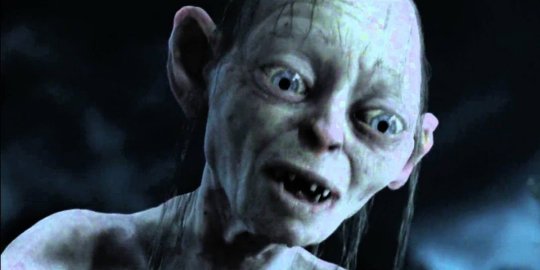
It was pretty risky making one of the main characters in the trilogy completely created using CGI. Though Andy Serkis supplied Gollum's movements with motion capture technology and provided his voice, everything else was computer generated. At the time it was done, it was a bold move that paid off because Gollum had a great deal of personality.
RELATED: 10 Things Casual LOTR Fans Might Not Know About Gollum
What was innovative at the time has become dated, as Gollum's movements as he guides Frodo and Sam to the end of their journey in Mordor don't seem to have the weight of reality. They're entirely too fluid, and at times his skin looks flat rather than reflective with things like moisture, perspiration, or shadow.
9 SUPER LEGOLAS
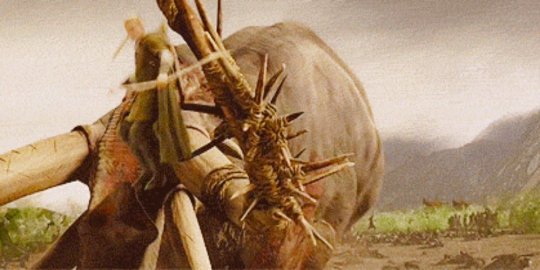
The archery prowess of Legolas Greenleaf can't be disputed, but it's often overshadowed by the CGI used to enhance his movements. While it doesn't ever reach The Hobbit levels of ridiculous acrobatics, it gets close. A particular crime against CGI occurs when he surfs down an oliphant's trunk after shooting it on the head.
Making Legolas look like he's in the middle of Super Smash Brothers rather than Middle-Earth is distracting at the very least, and completely pulls the viewer out of the fantasy of whatever he's doing. All we notice is the bad CGI, not that he did an amazing feat.
8 THE BATTLE SEQUENCES

In prior fantasy and historical epics, in order to do suitably impressive battle sequences with thousands of soldiers, thousands of extras had to be employed. These actors had to be fitted with thousands of suits of armor, and the scenes had to be shot incorporating all of them to create an enormous crowd. It was expensive and unruly, but it looked believable when it was done well.
RELATED: Lord Of The Rings: The Top 10 Battles, Ranked
Peter Jackson pioneered the computer AI that was used to create the thousands of soldiers necessary to show his battles in the proper scale. From orcs to Rohirrim, all of the fores fighting in the Return of the King are impressive in their existence, but not always in their execution because they all look the same.
7 THE MOUTH OF SAURON
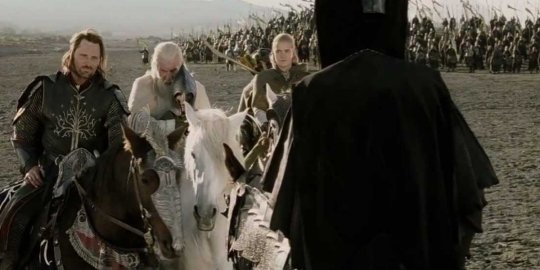
As though the trilogy isn't already long enough, with the the third film having the longest running time, there are extended versions of them that put the whole viewing experience past the nine hour mark. This leaves room for all sorts of eyesores to stand out, like in the extended version of The Return of the King.
Before the epic final battle outside the Black Gate, we get treated to a scene of Aragorn, Gandalf the White, and Legolas having a parley with the Mouth of Sauron. This scene clearly shows The Mouth as a dummy dressed in armor sitting on a horse in front of Gandalf.
6 THE UNDEAD ARMY AT PELENNOR FIELDS

Aragorn and company know that the only way that the forces of Men and Elves can defeat Sauron's dark armies is to have a dark army of their own. The Army of the Dead is as dark as it gets, comprised of cursed men that live in a constant spectral state due to their avarice in life.
They appear in the Battle of Pelennor Fields to help Aragorn and his allies face Sauron's armies, and they wash over the platoons of orcs, goblins, and Uruk-hai like an overturned glass of Hobbit mead. The effect isn't so much chilling as confusing, and all the ghosts look identical, adding to the peculiar look of the scene.
5 THE GLOSSINESS AT MINAS TIRITH

The battle for Minas Tirith is definitely an exciting skirmish in the film, where Gandalf has a suspenseful run in with the Witch King, and Pippin gets to prove his mettle. However the entire series of scenes is diminished by whatever glossiness is happening throughout the city.
Like a lens flare on steroids, the glossy/glow nature of the filter on these scenes is so different from every other battle sequence in the film as to be distracting. As a viewer, it almost makes you want to shield your eyes to be able to focus more on the events unfolding.
4 ARAGORN AT THE BLACK GATE

The entire sequence where Aragorn and the forces of Men face down Sauron's dark armies is one of the most stirring in the third film, if not all of the trilogy. There's so much emotion culminating in those moments that it's almost enough to make you forget how weird the scene looks right before he charges.
For one thing, the lighting is extremely strange, with the antagonists and protagonists lit in such different ways as to make them look spliced together in the frame. The texture of the ground is also odd, and there's something that seems out of place about the perspective of the shot.
3 THIS GUY
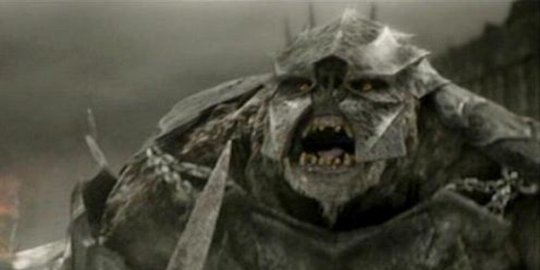
While some fantasy lovers may not like "some guy in a suit" type of practical effects, they have an edge over completely computer generated antagonists, like this troll that Aragorn faces in Return of the King. Part of the reason the orcs and Uruk-hai aged so well in The Fellowship of the Ring is because they were actors wearing prosthetics.
Unfortunately, the same can't be said for Mollok here. The King of the Trolls, he gets smited by Aragorn in battle, which is a good thing because it means we don't have to look at him trying to barge into Gondor for very long. For being the King of the Trolls, he isn't any more exceptional than any of the other trolls seen in the film.
2 THE OLIPHANTS

As impressive as the oliphants looked at a distance in The Two Towers, when we see the gargantuan beasts up close in Return of the King, they look completely separate from every other portion of Sauron's dark forces. The Easterlings mounts stand out and not in a good way.
Compared to everything else, they look the most cartoonish. Not only do that, but they look entirely too smooth, and the texture of their skin looks like it's made of rubber. Unfortunately, they're so big that they draw the most attention, reminding viewers that they're just CGI and don't really exist.
1 DEAGOL AND THE FISH

In the third film, we get to understand a bit more about Gollum's backstory, including a flashback to when he first found the One Ring. At that point, he was a halfling like Frodo and Sam. He went by Smeagol, and together with Deagol, were fishing in a lake when a rogue fish dragged Deagol over the side of the boat.
The entire sequence of him being pulled by a fish through the murky water looks out of place, and it's very clear the actor isn't being filmed underwater at all. It pulls the viewer out of the film despite the intriguing storyline, and detracts from Gollum's tale of woe.
NEXT: Everything We Know (So Far) About Amazon's Lord Of The Rings Series
source https://screenrant.com/lord-of-the-rings-return-of-the-king-didnt-age-well/
0 notes